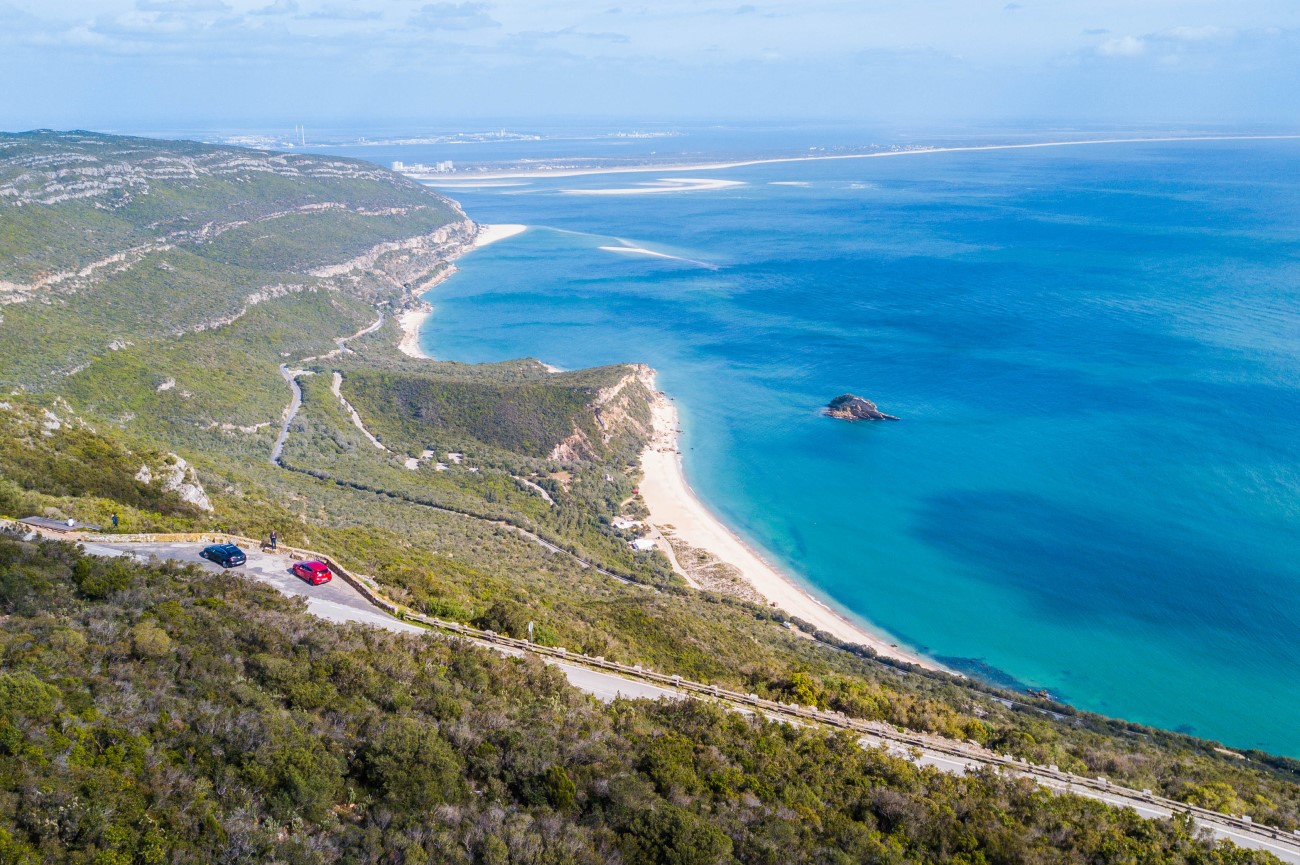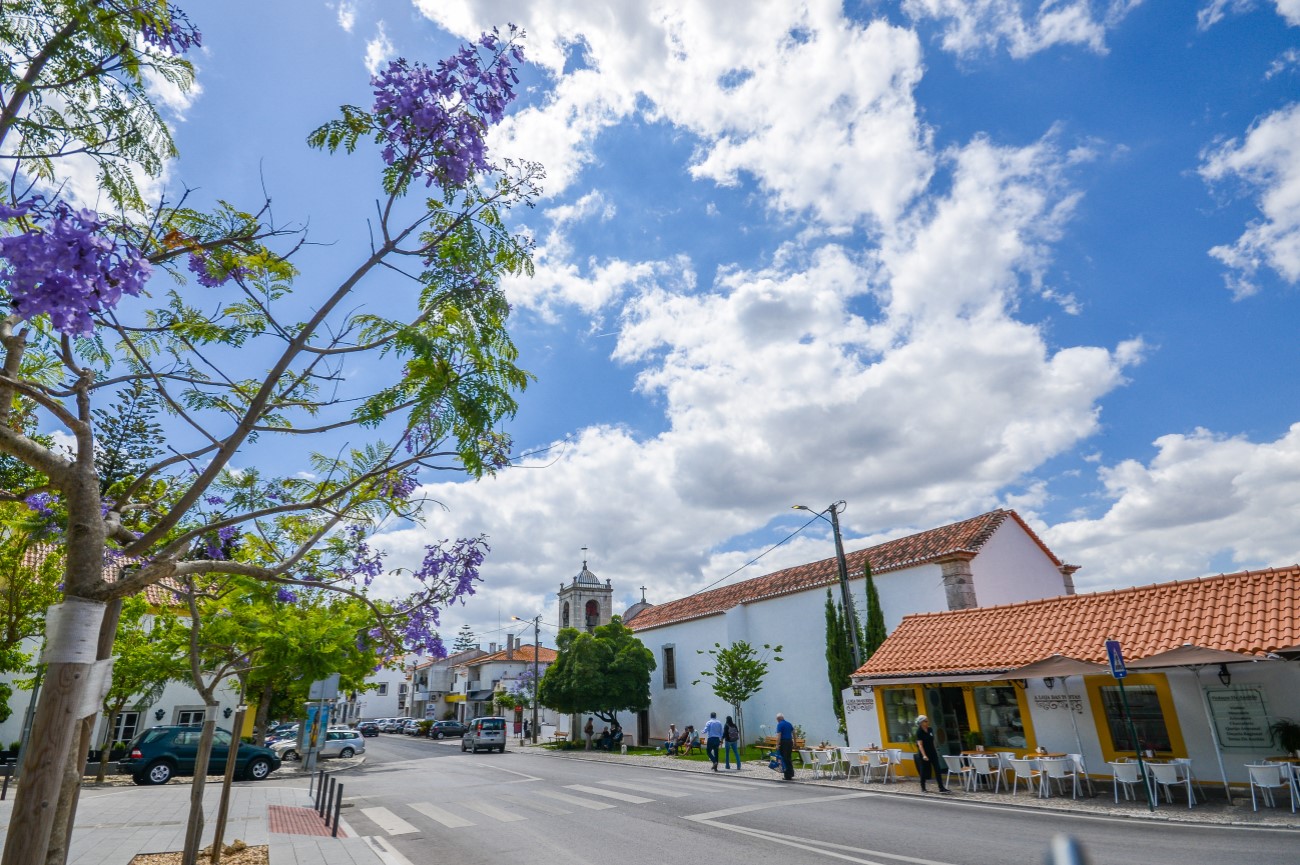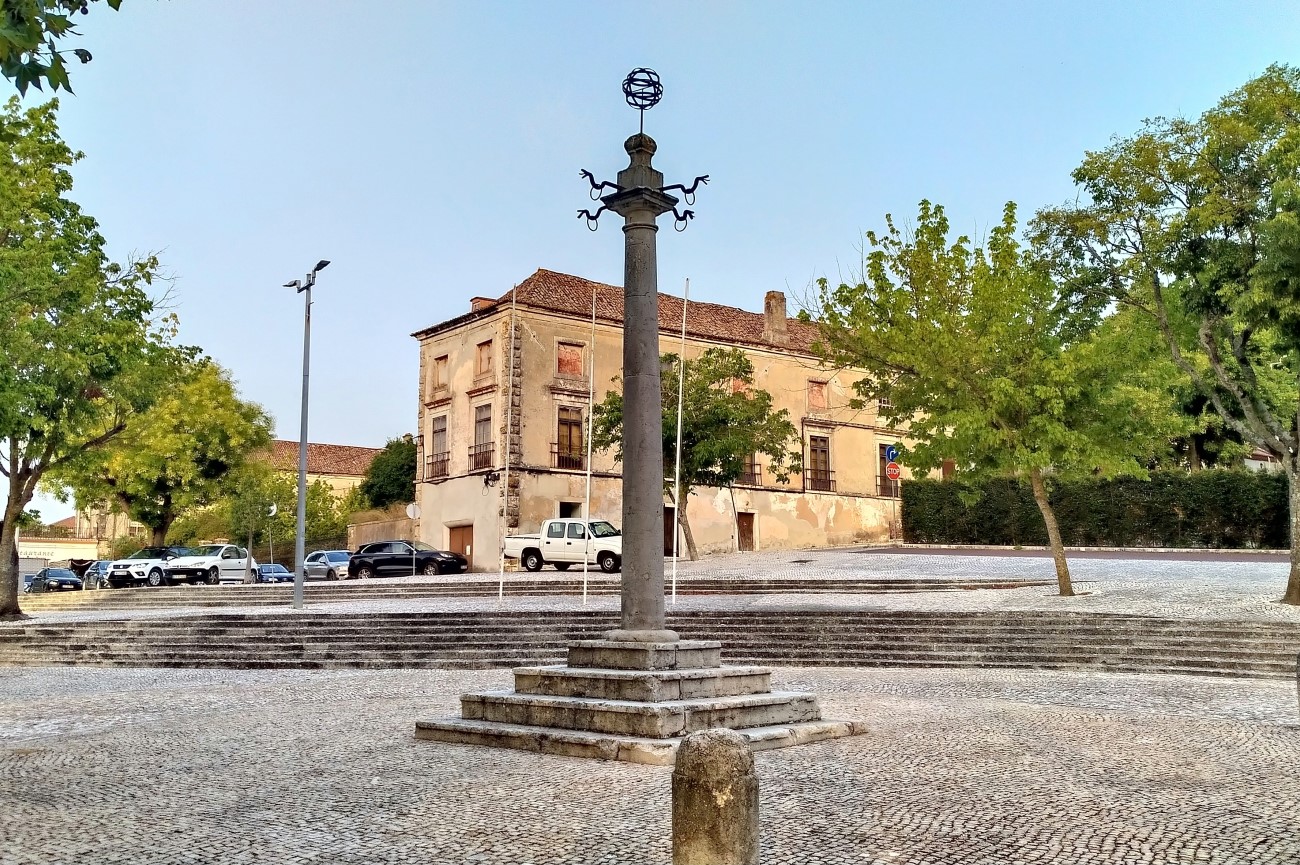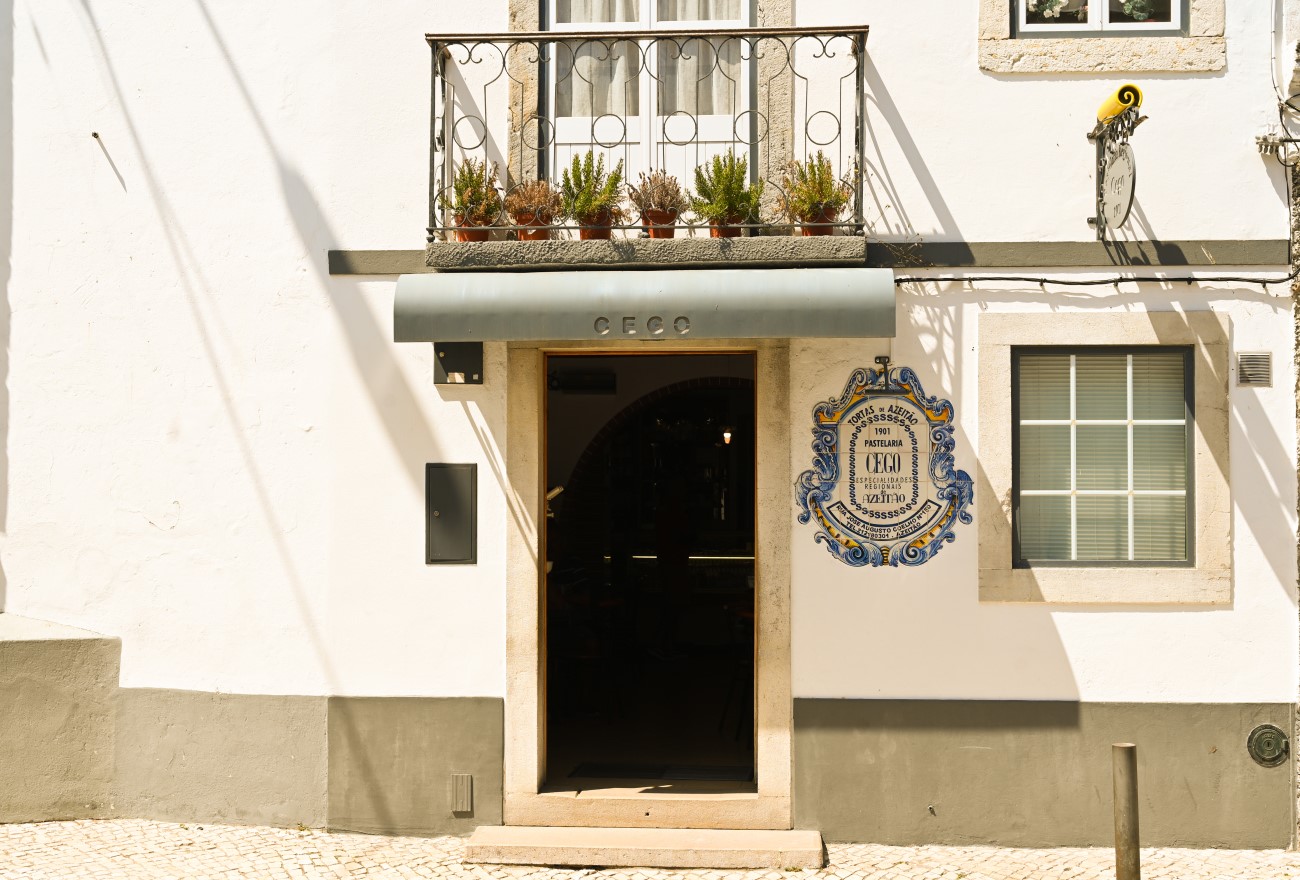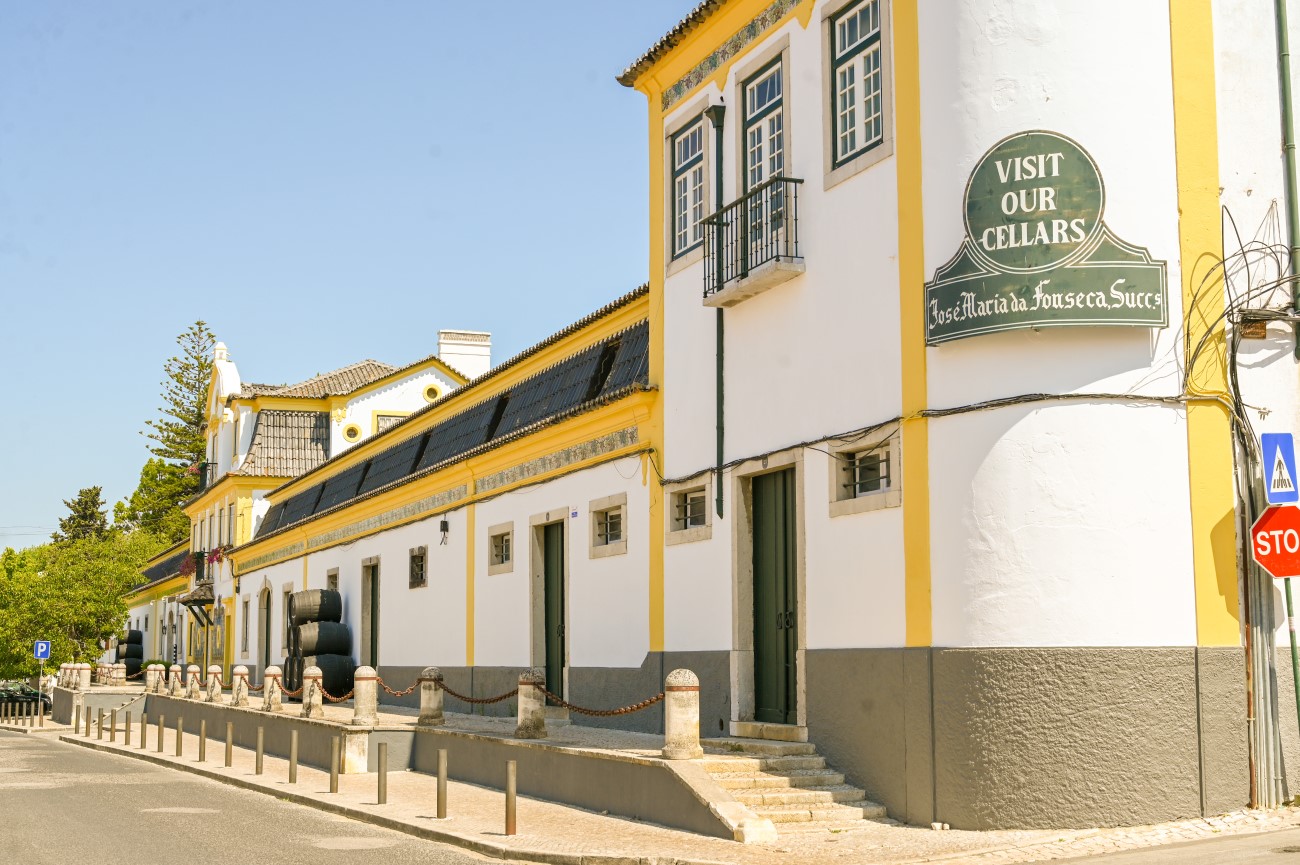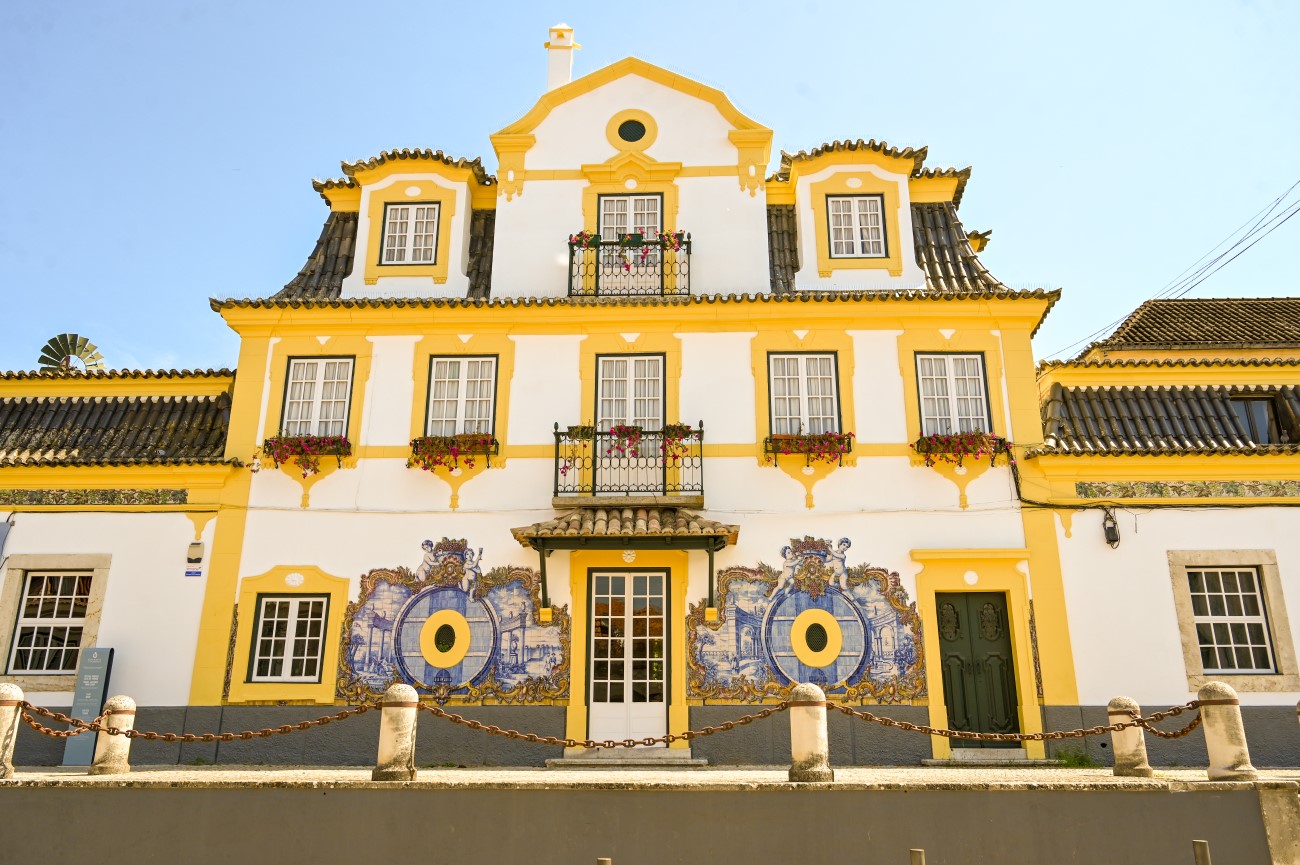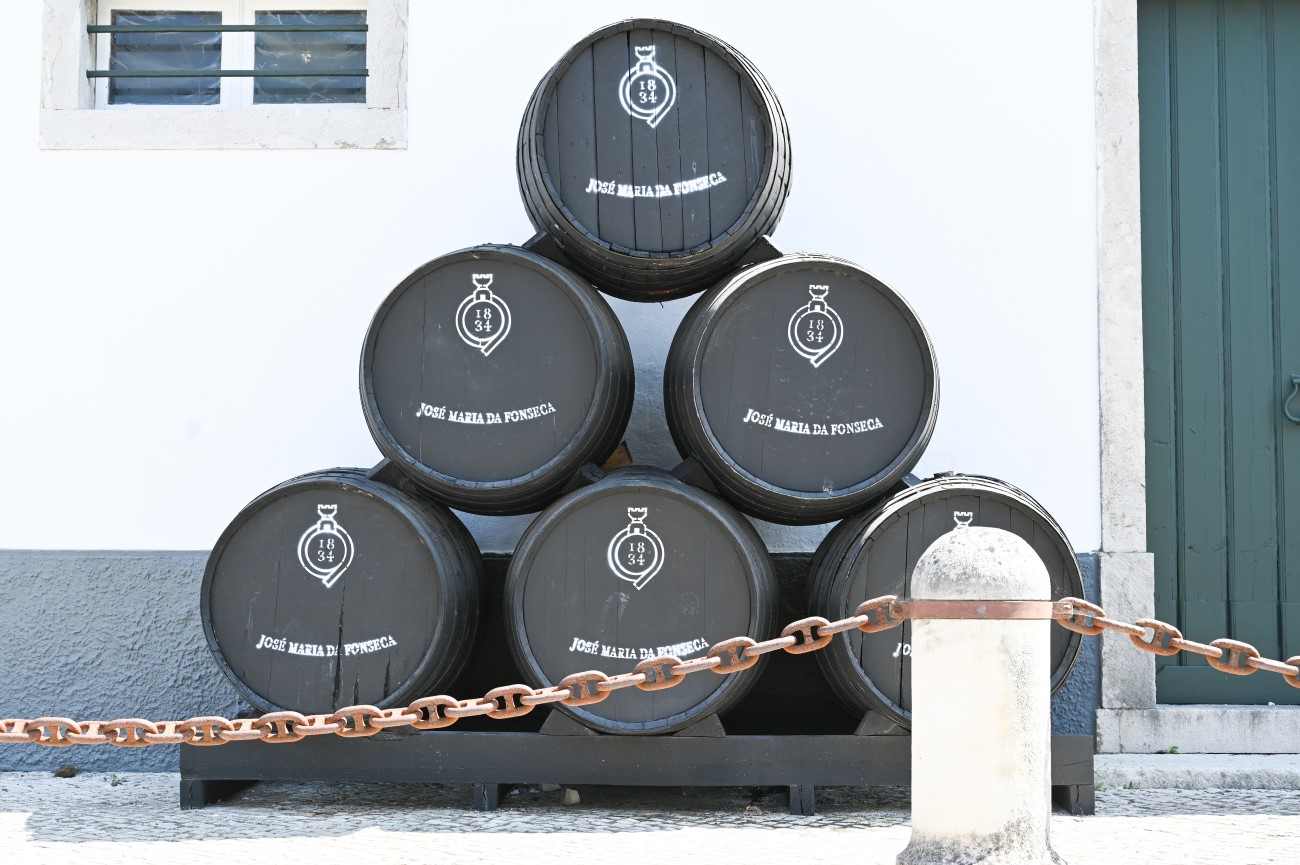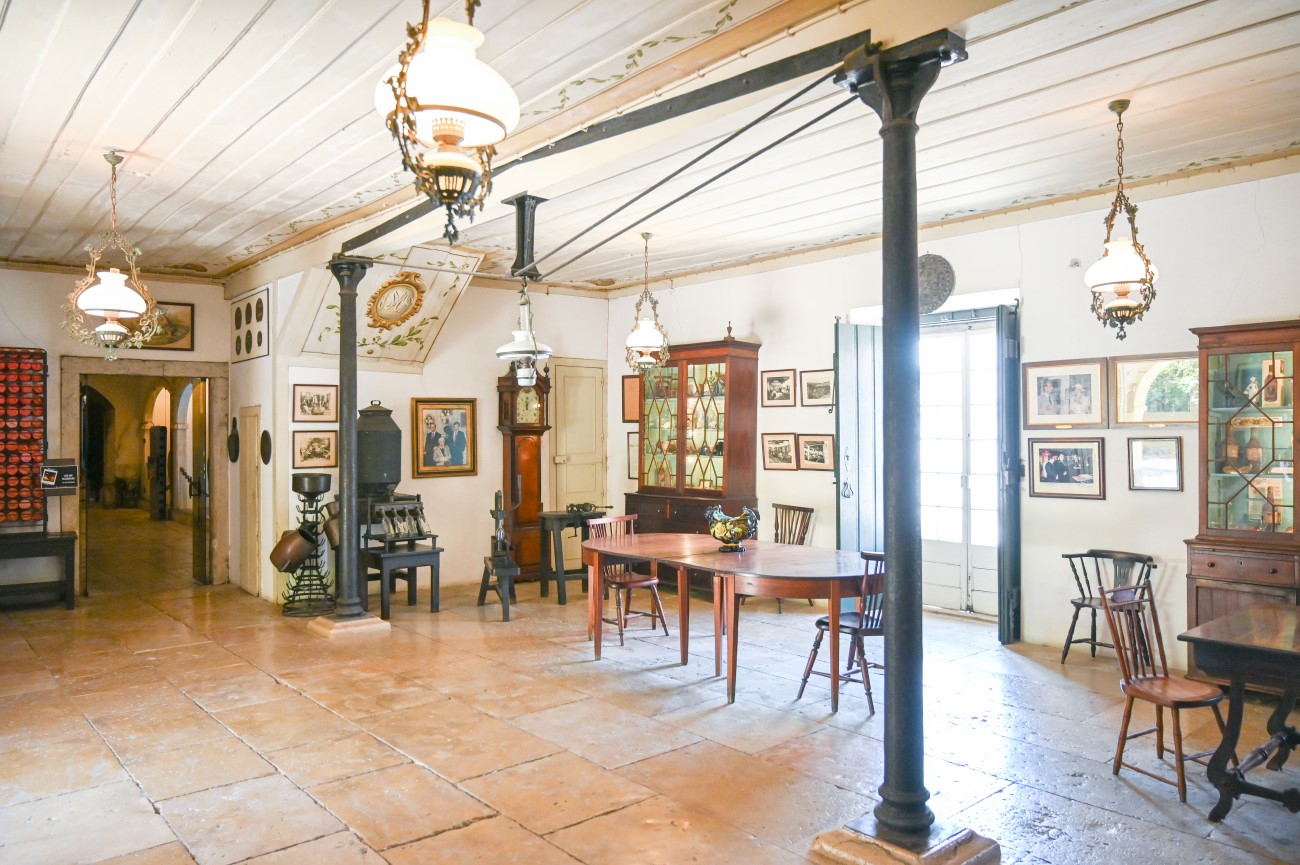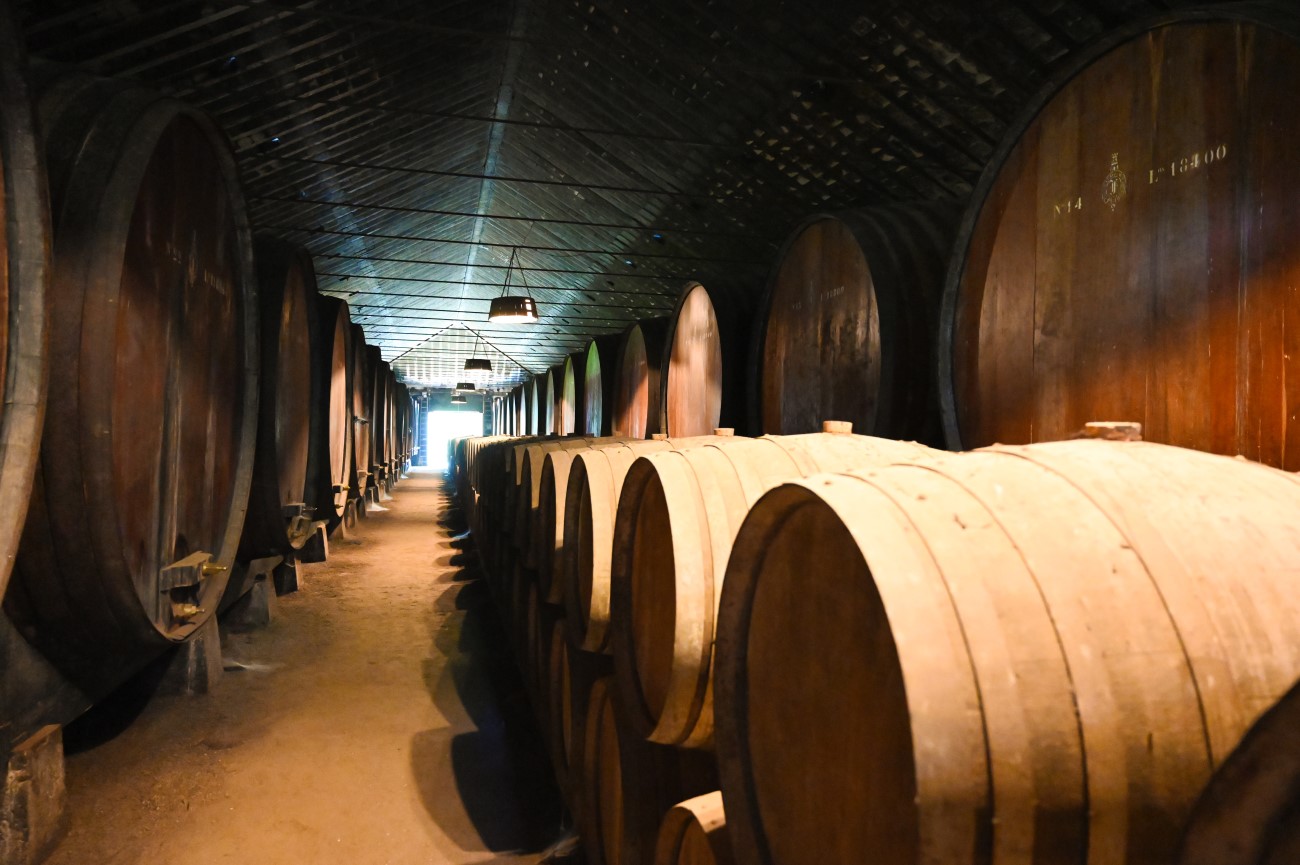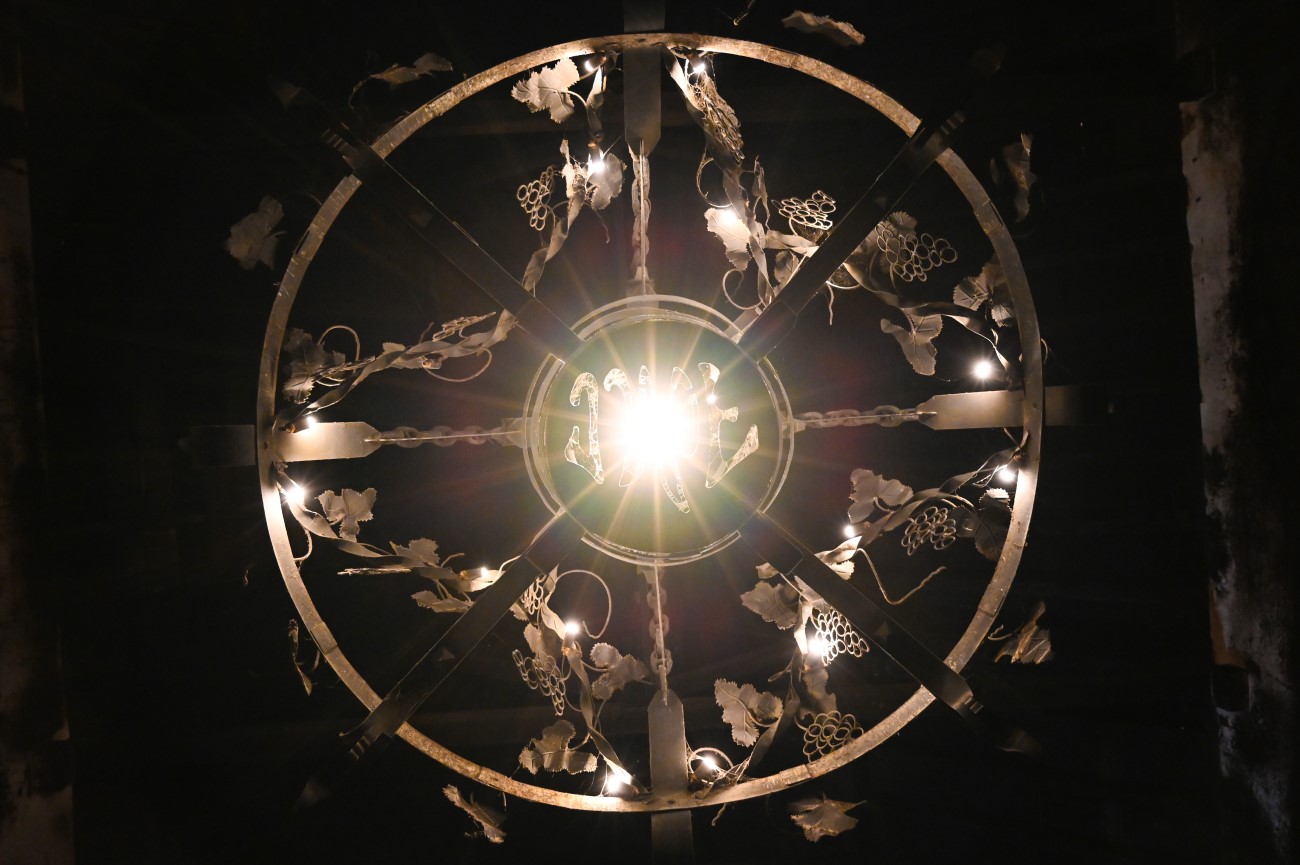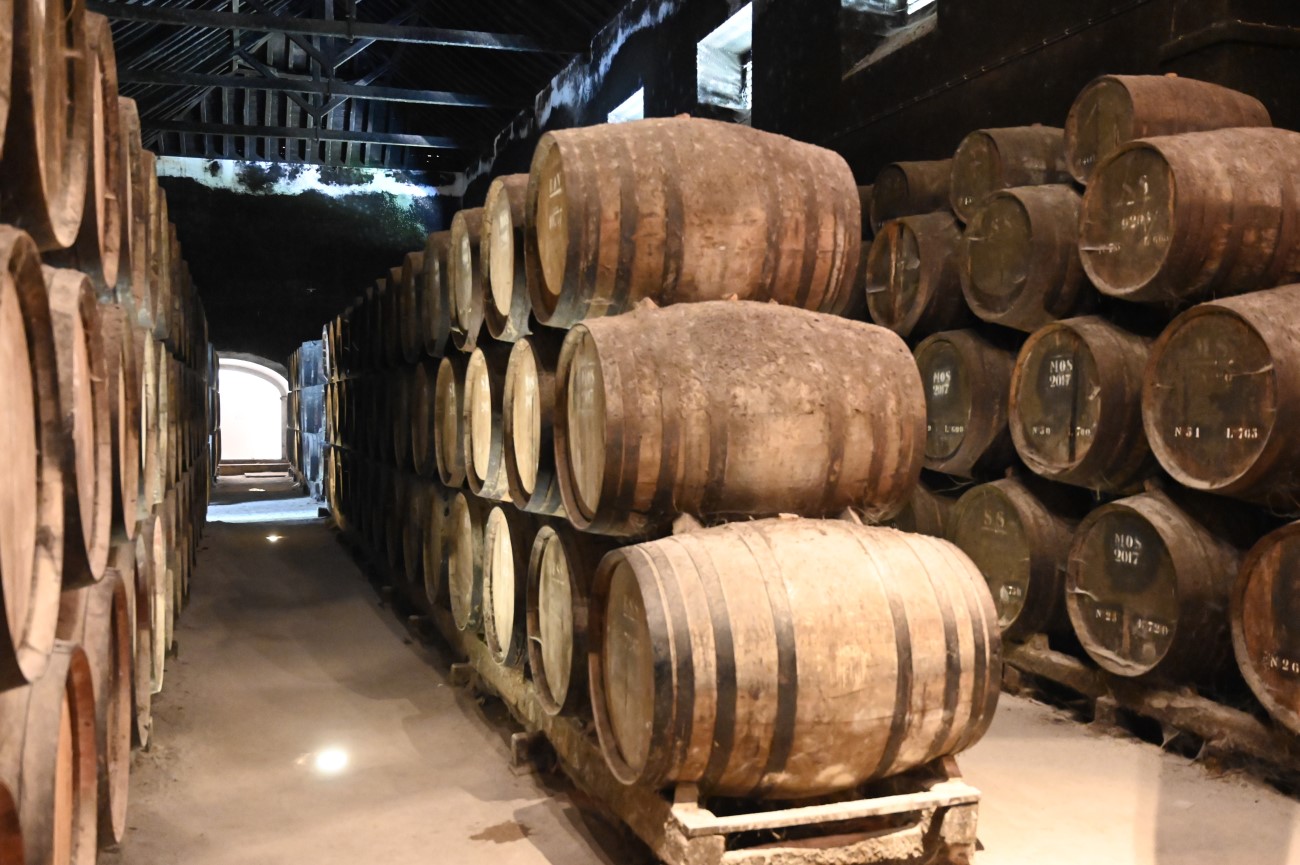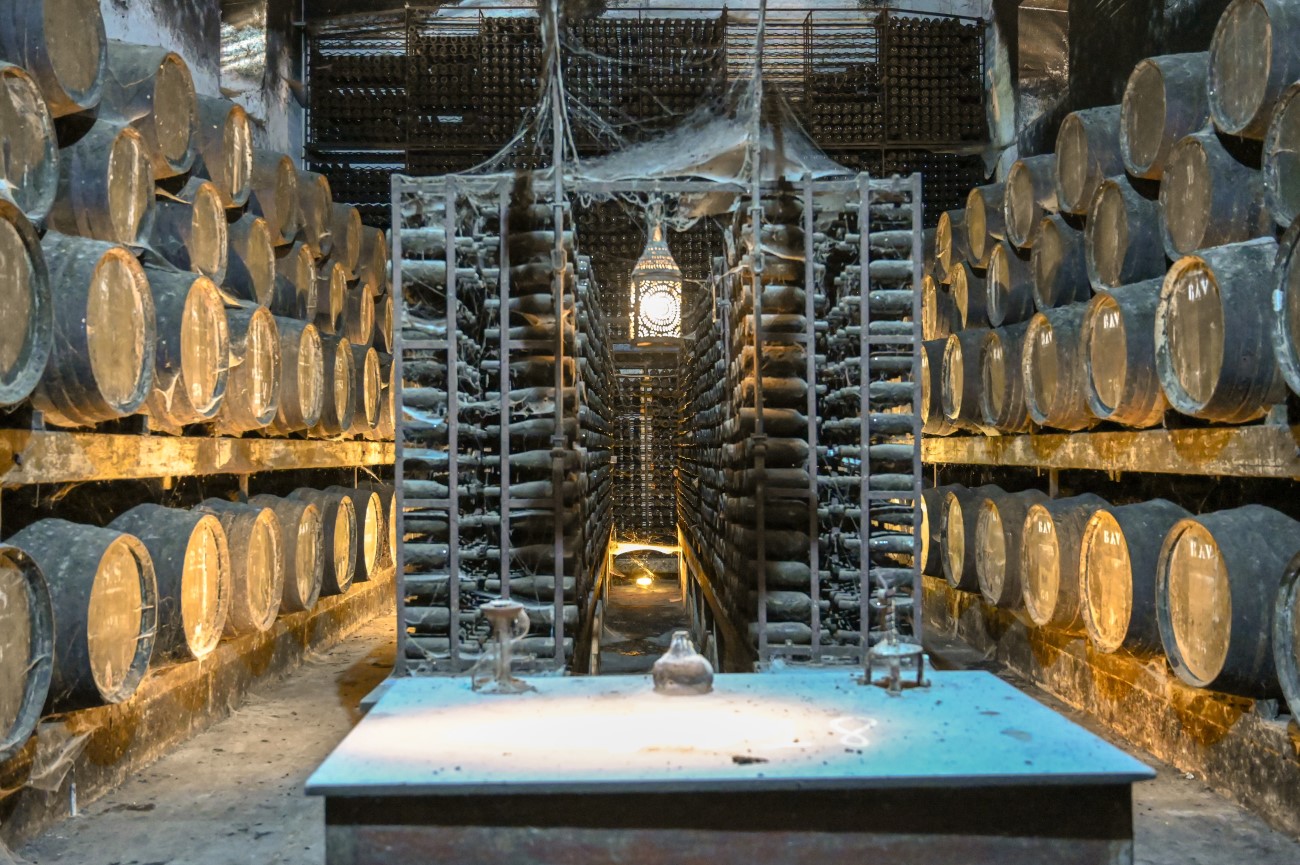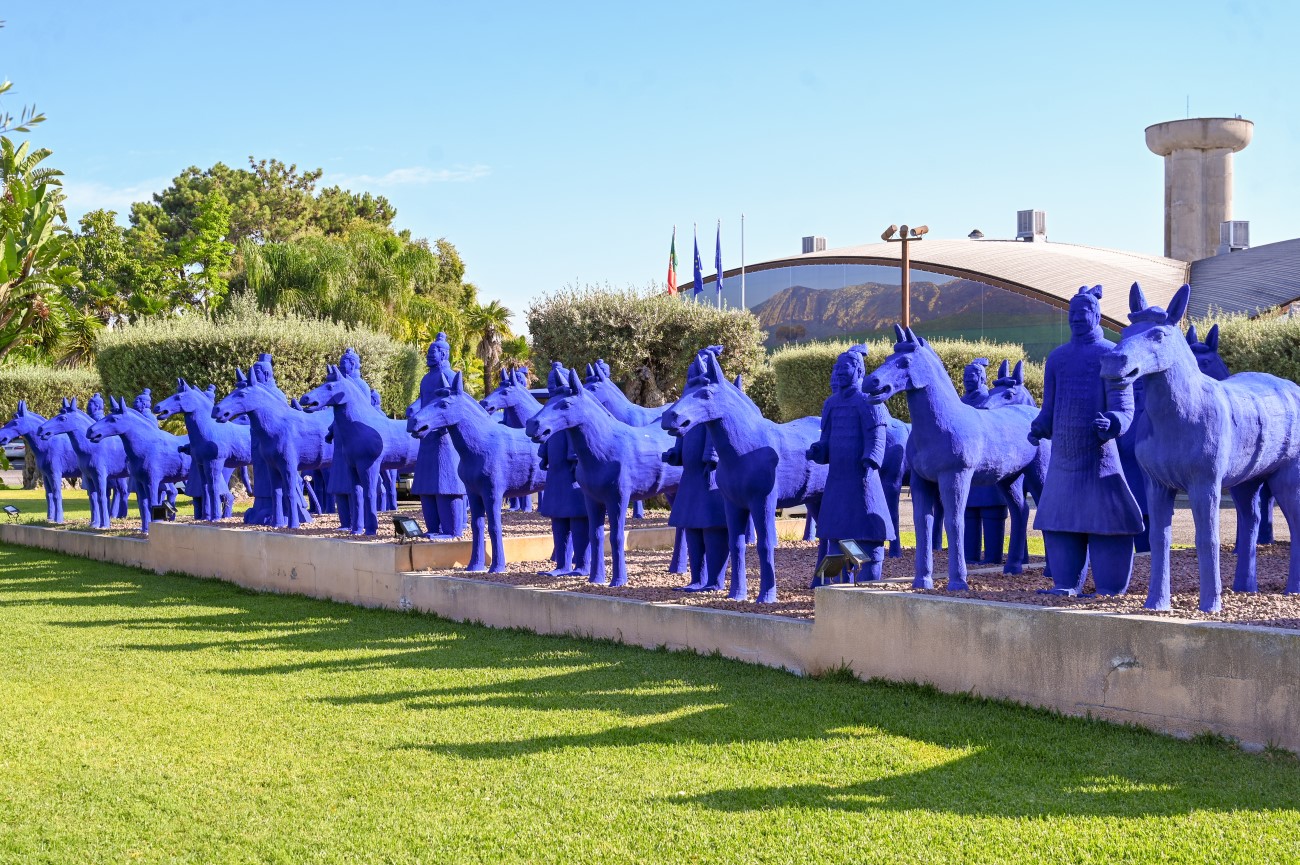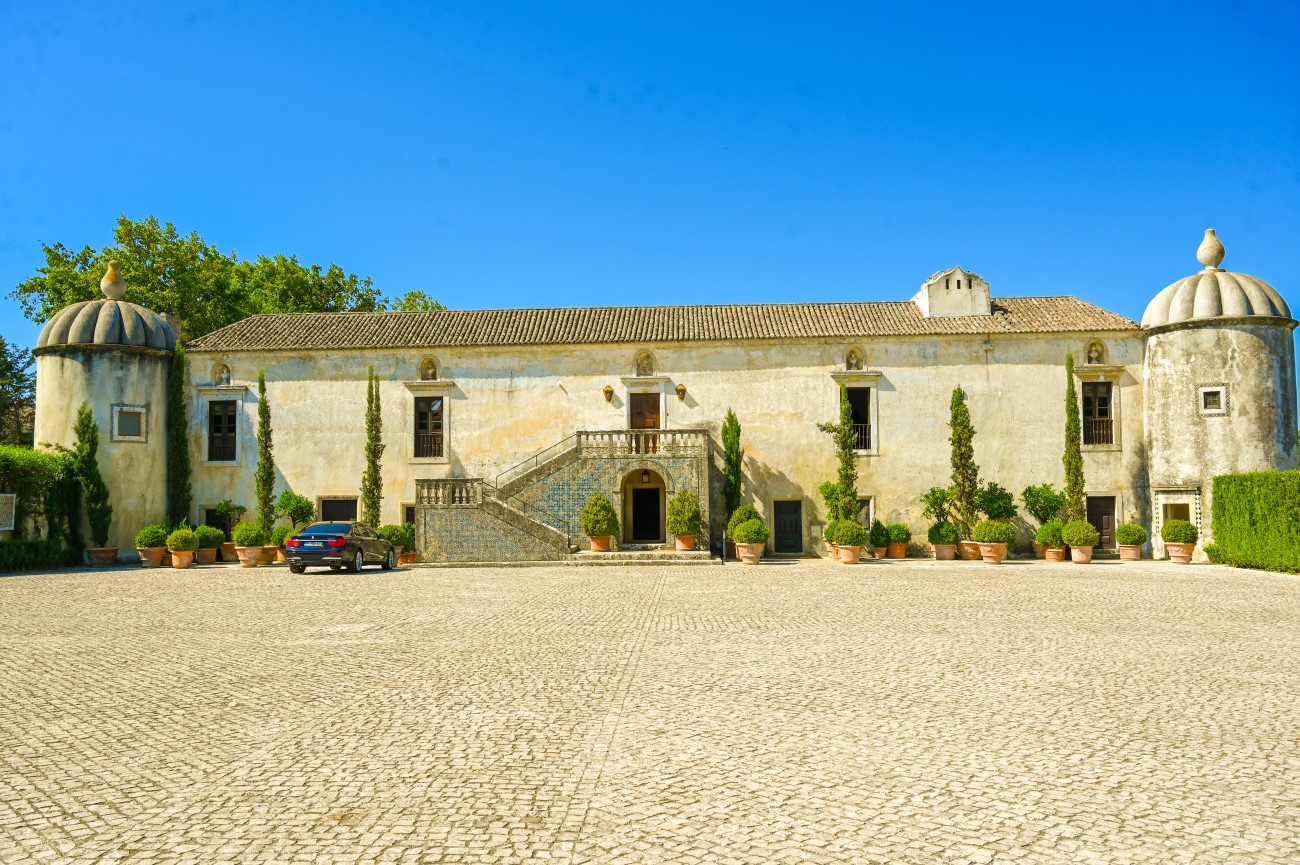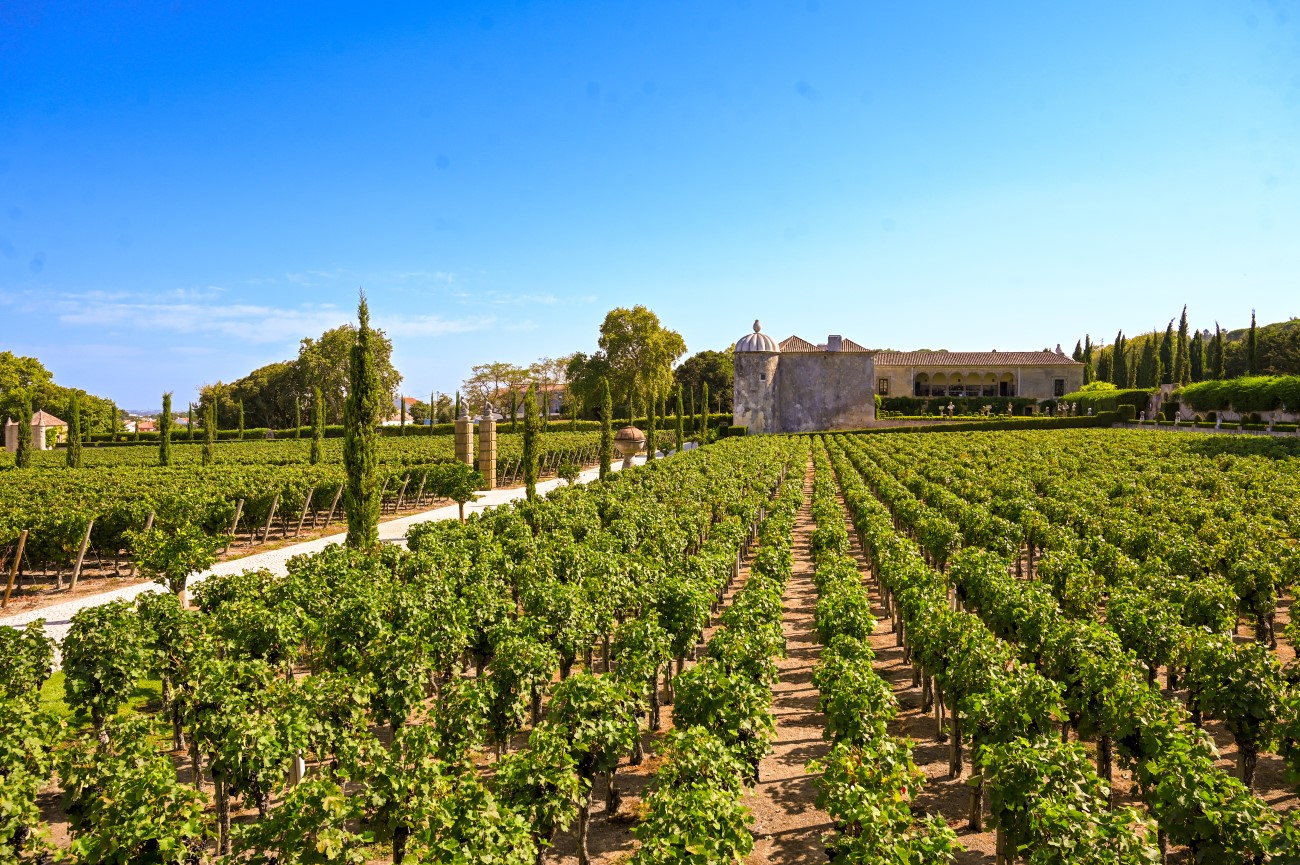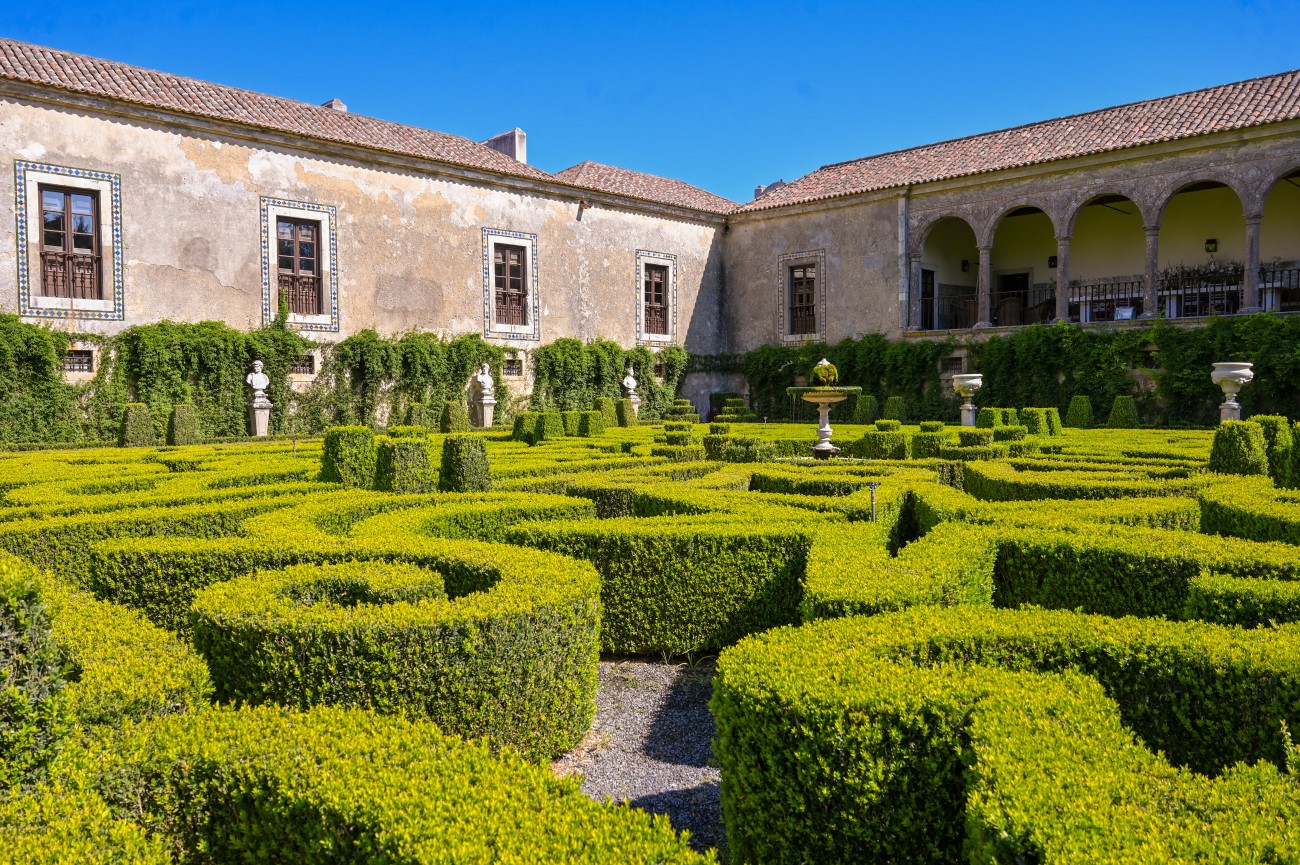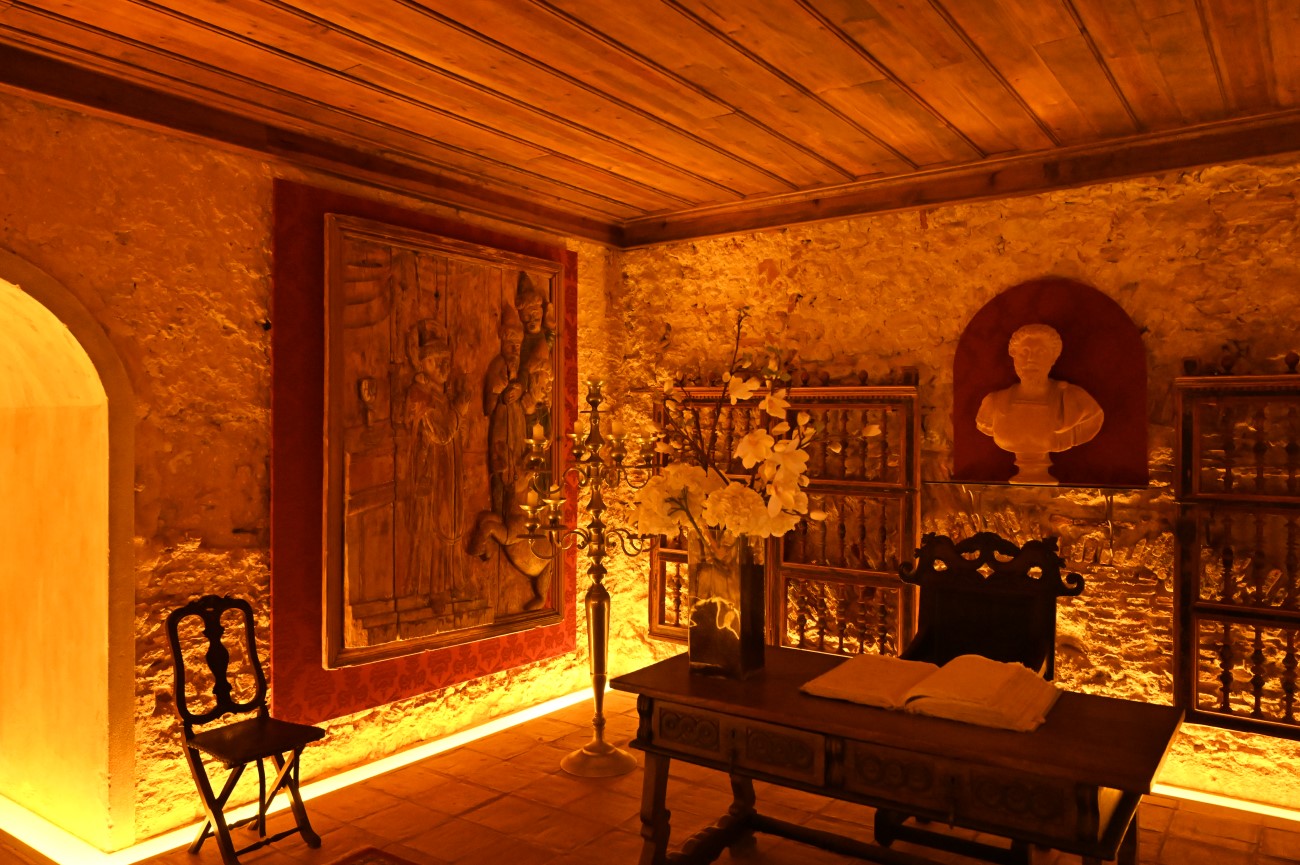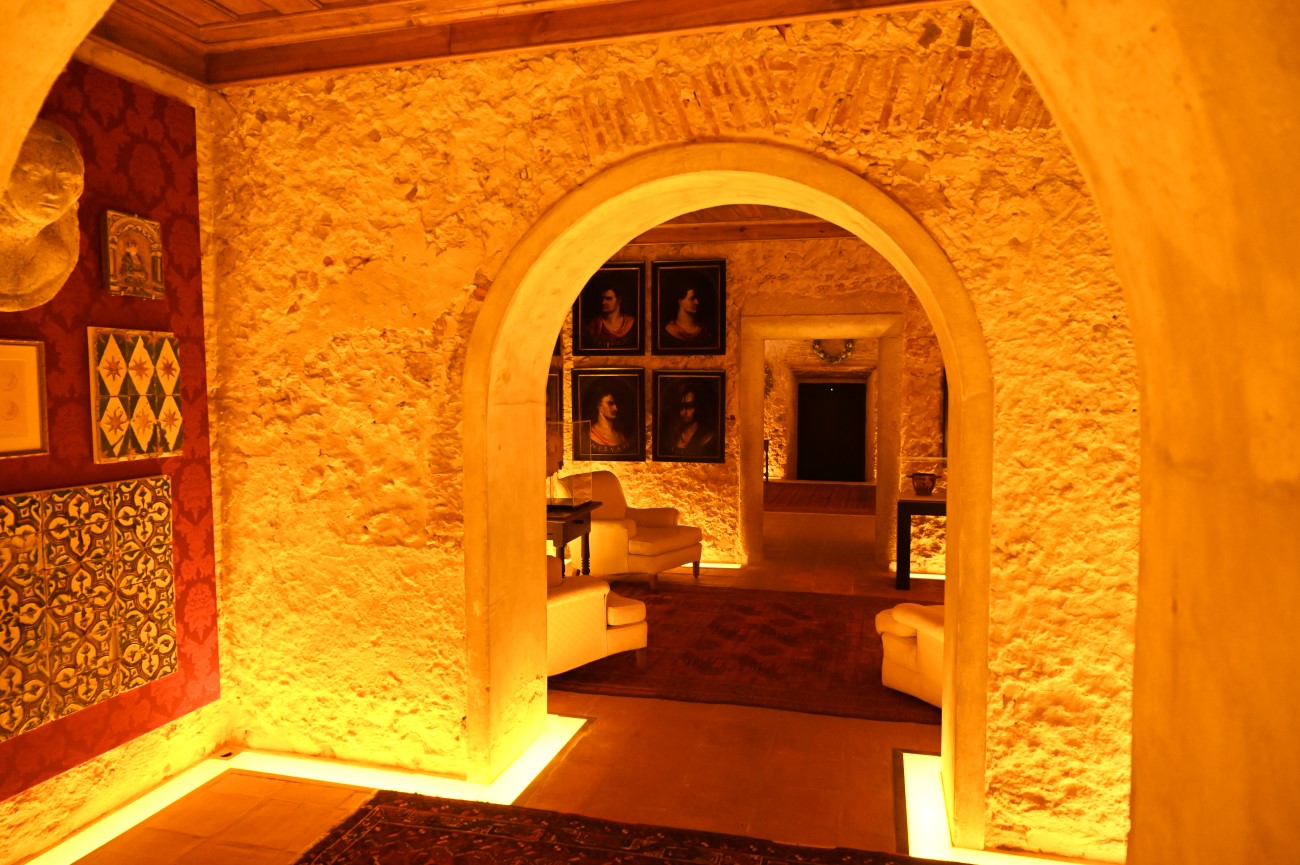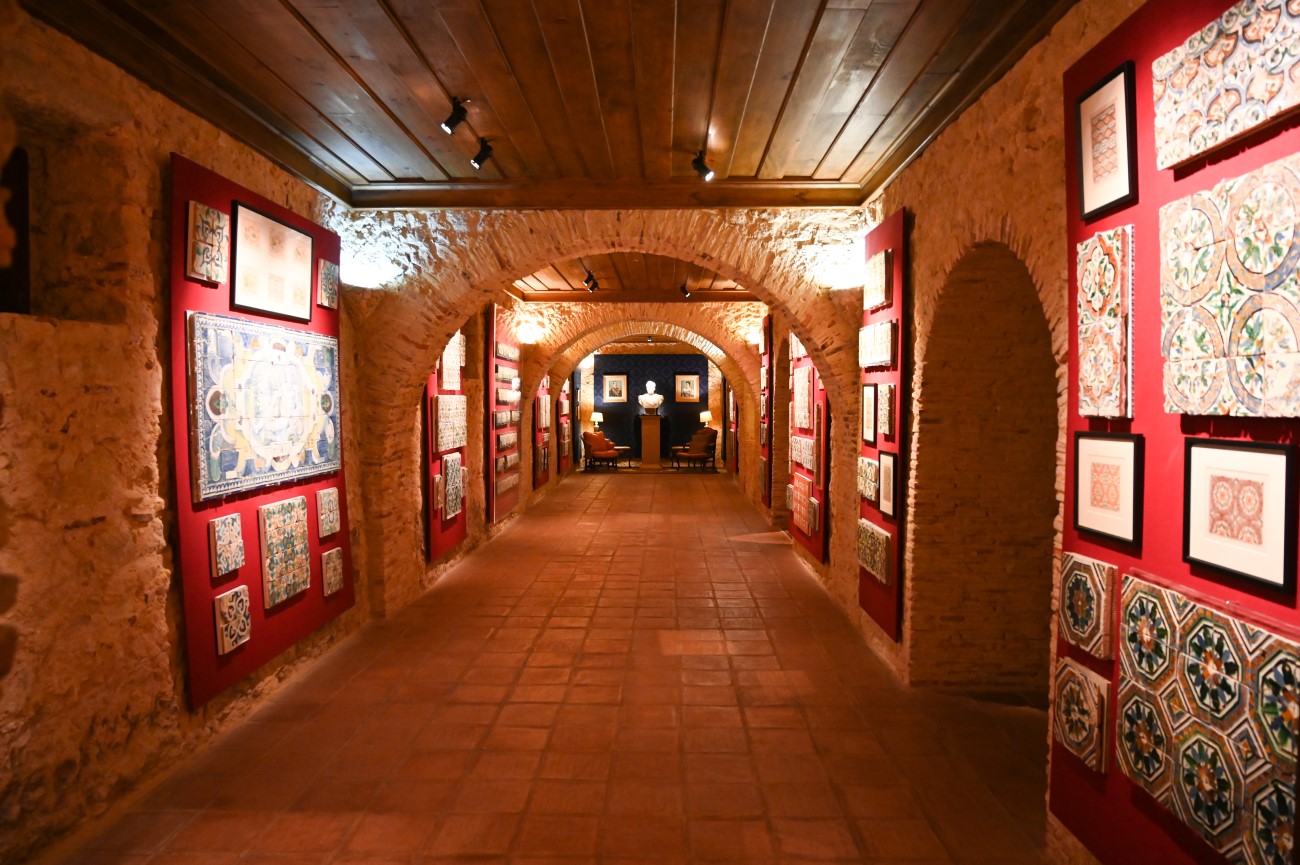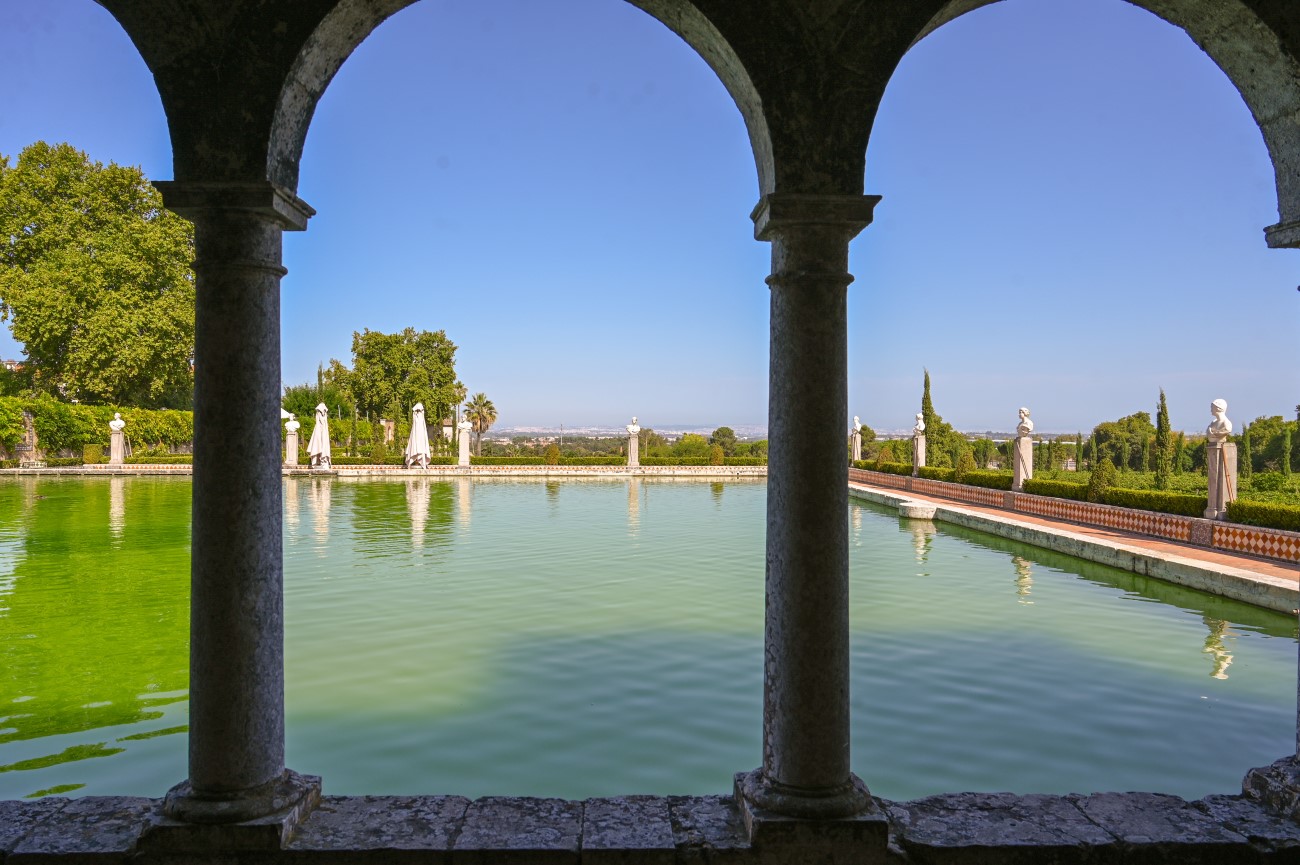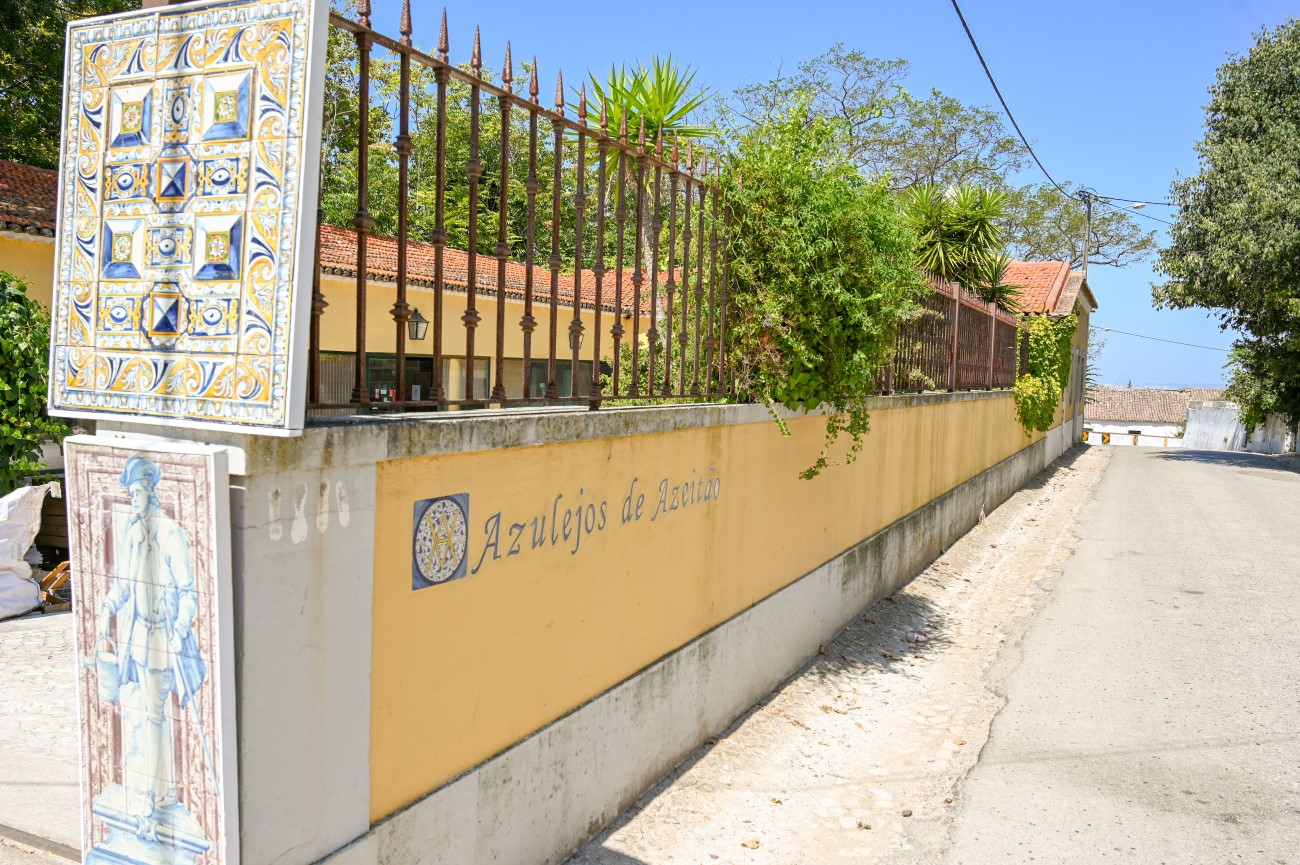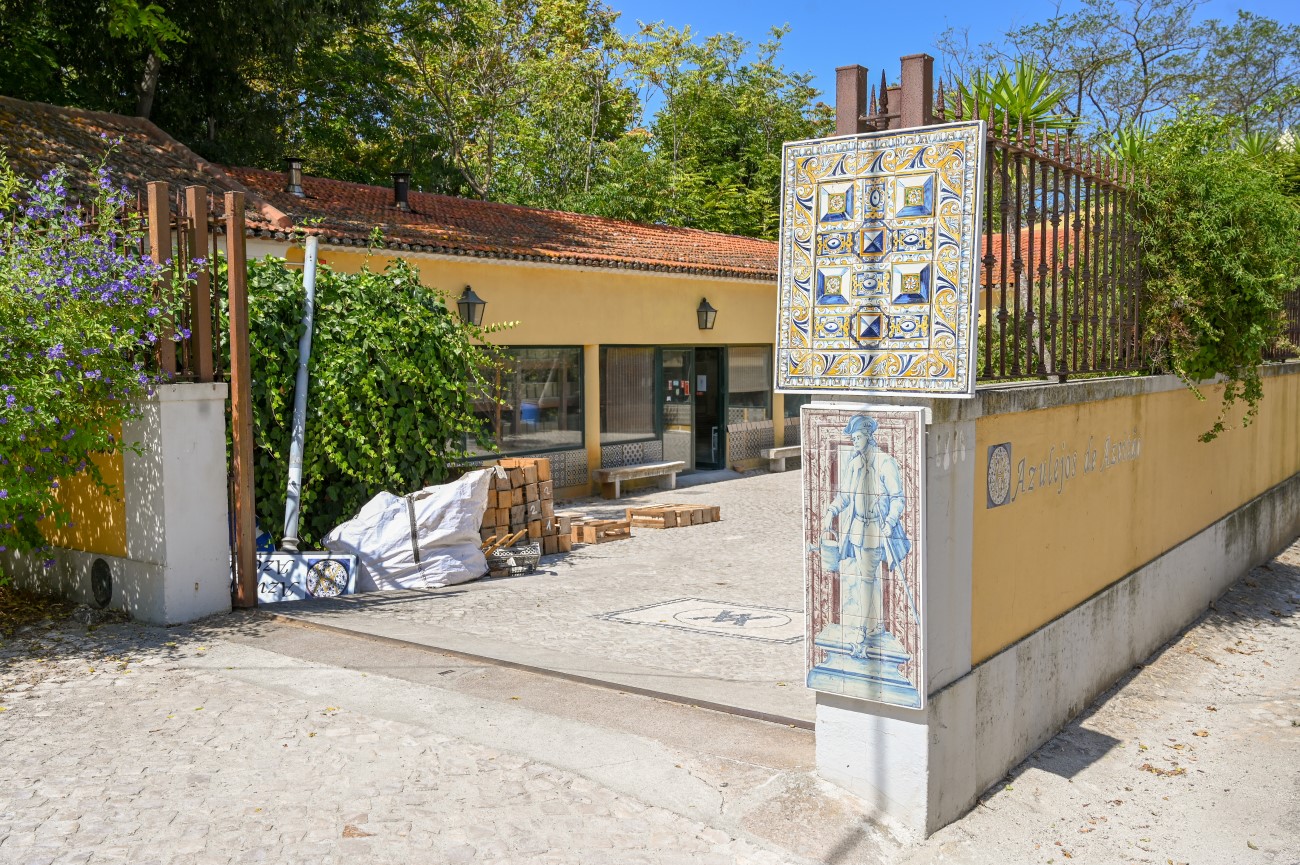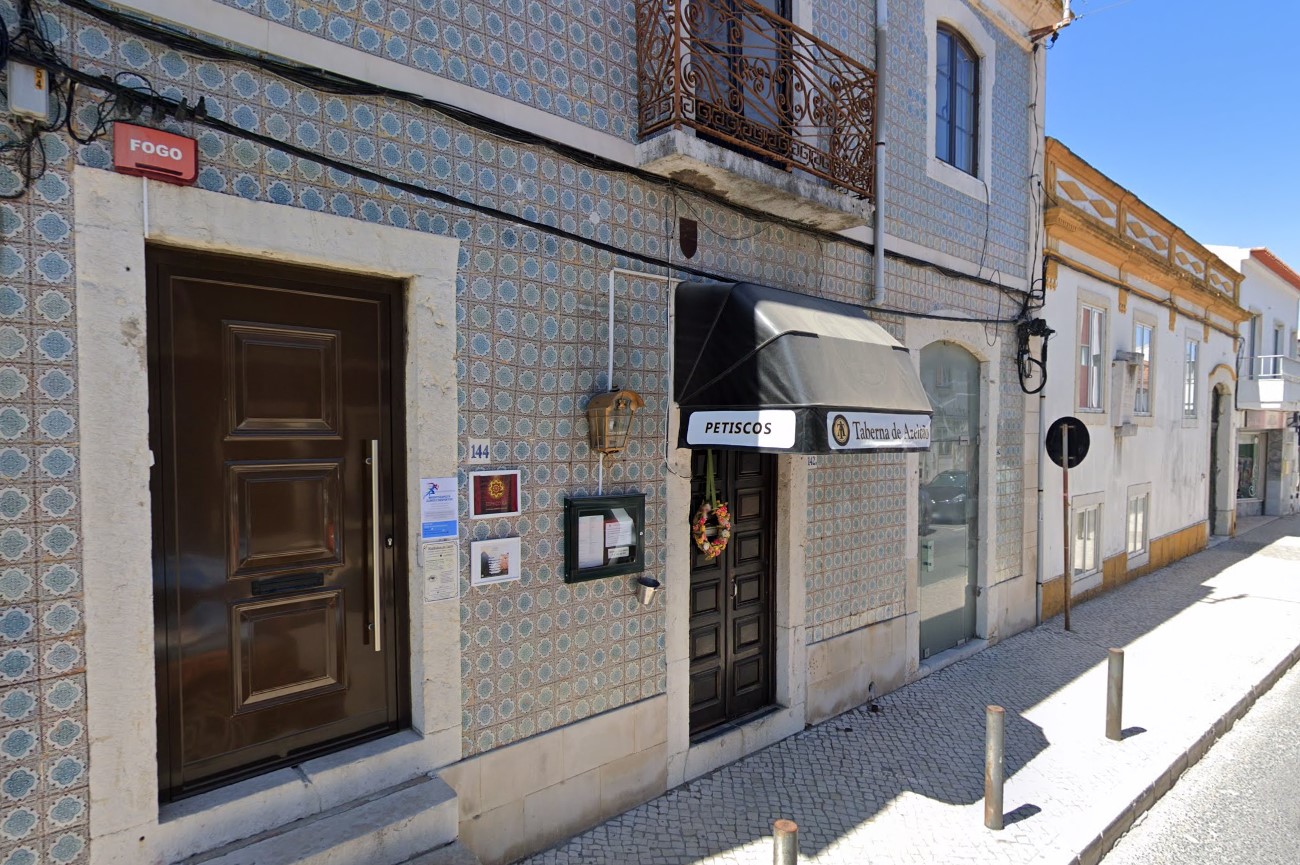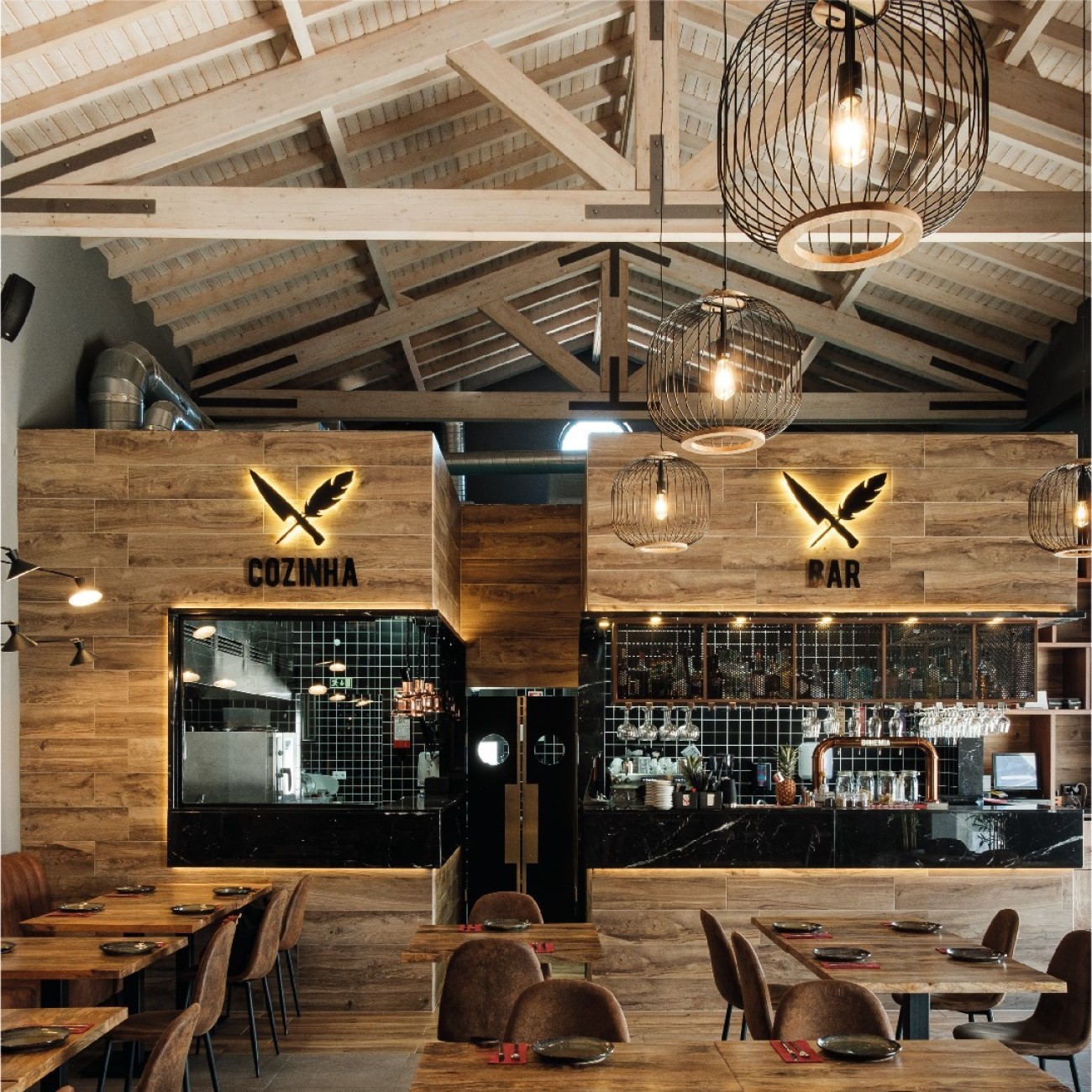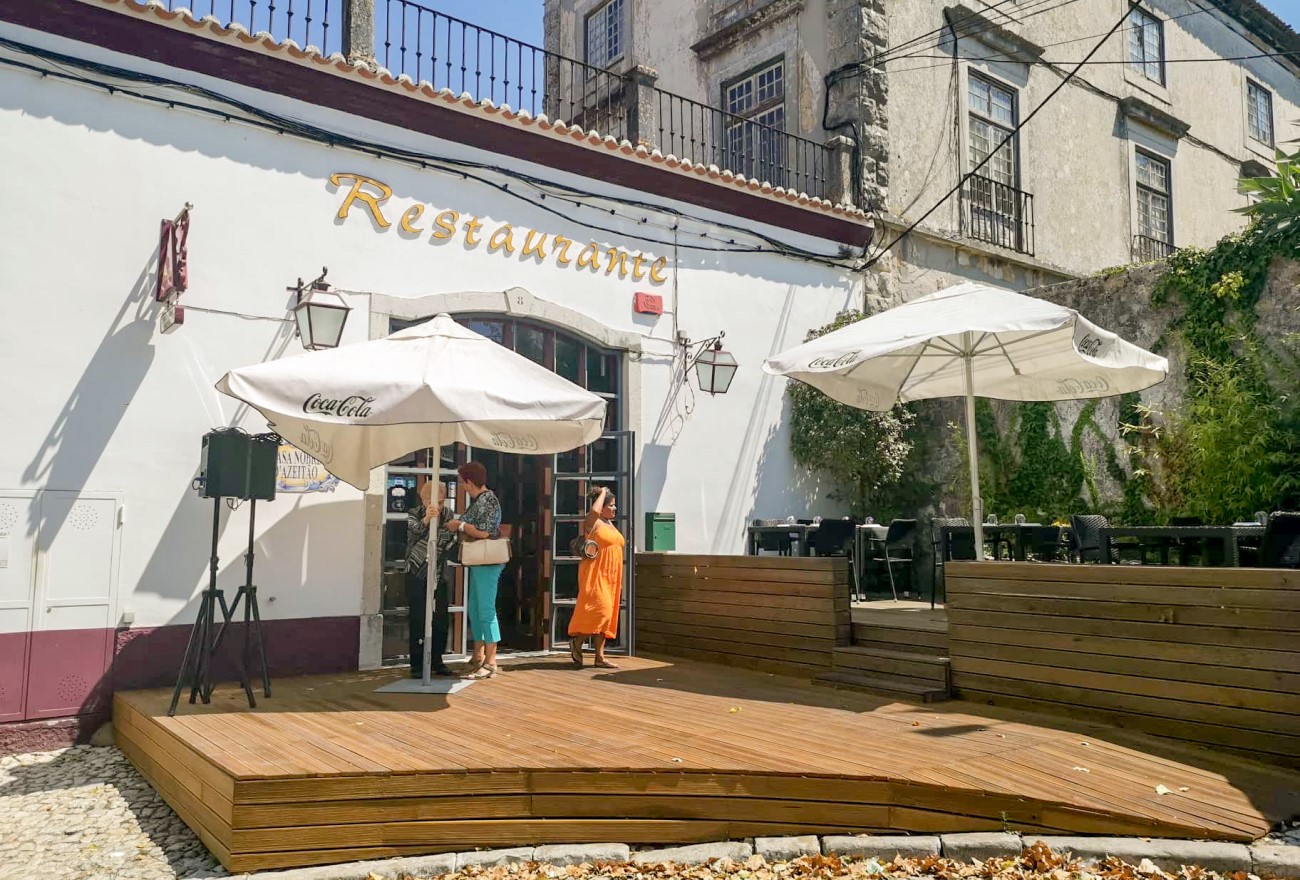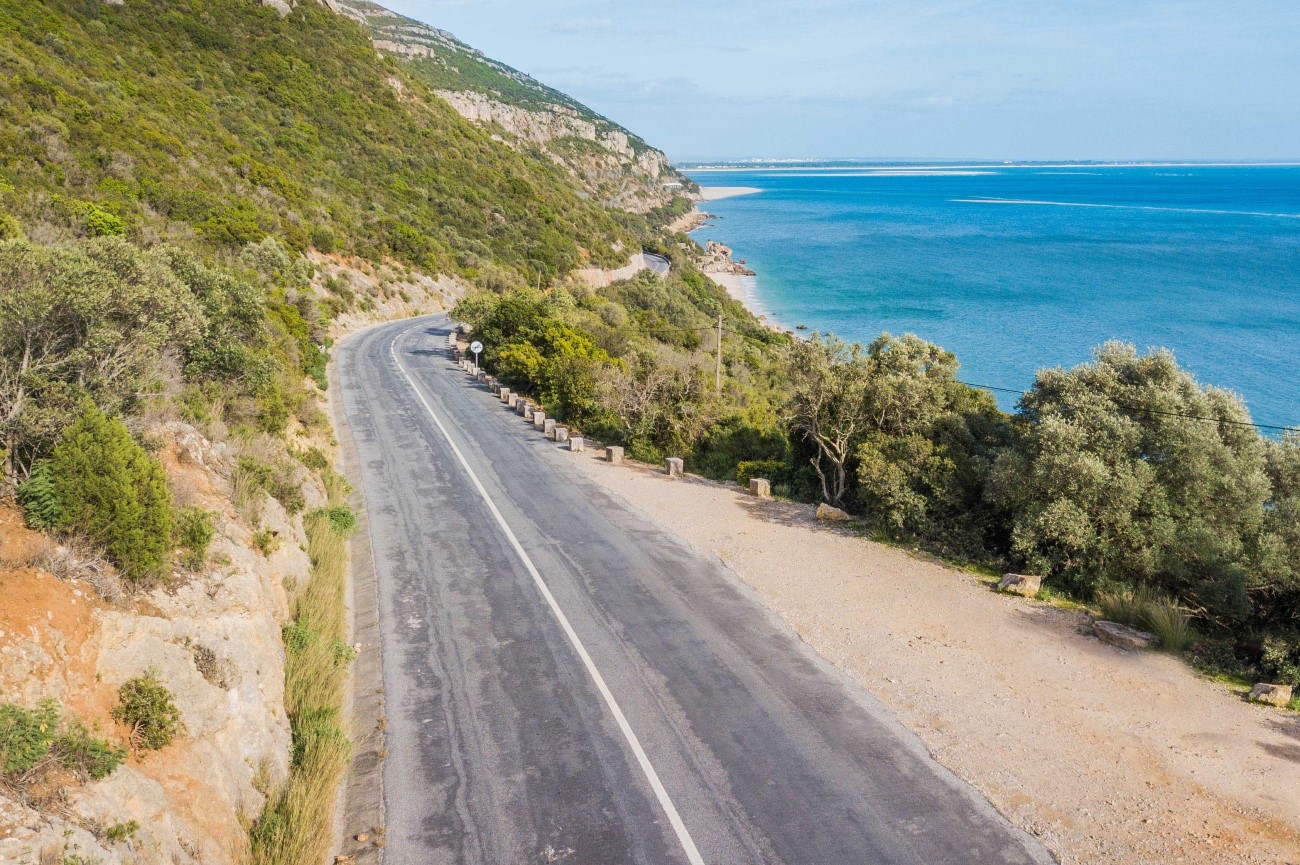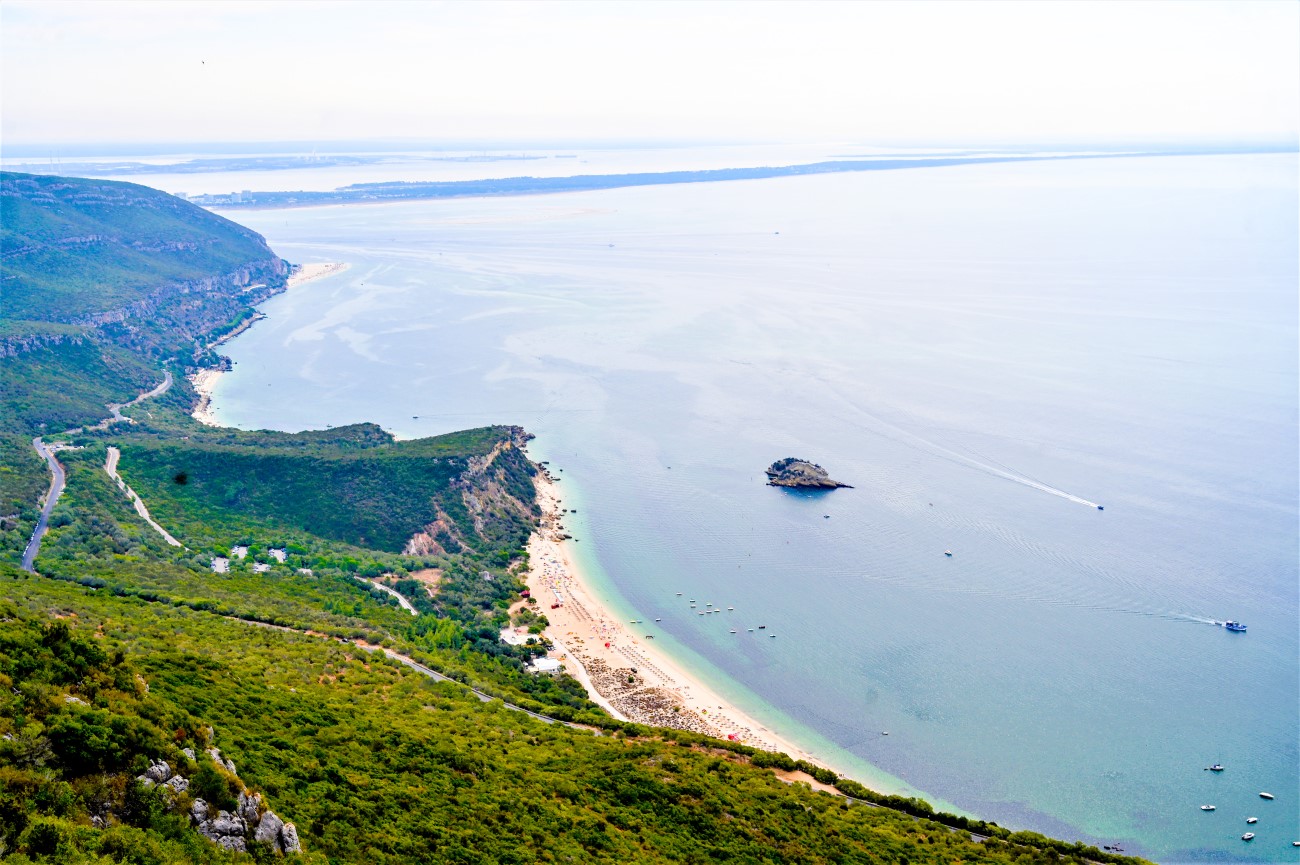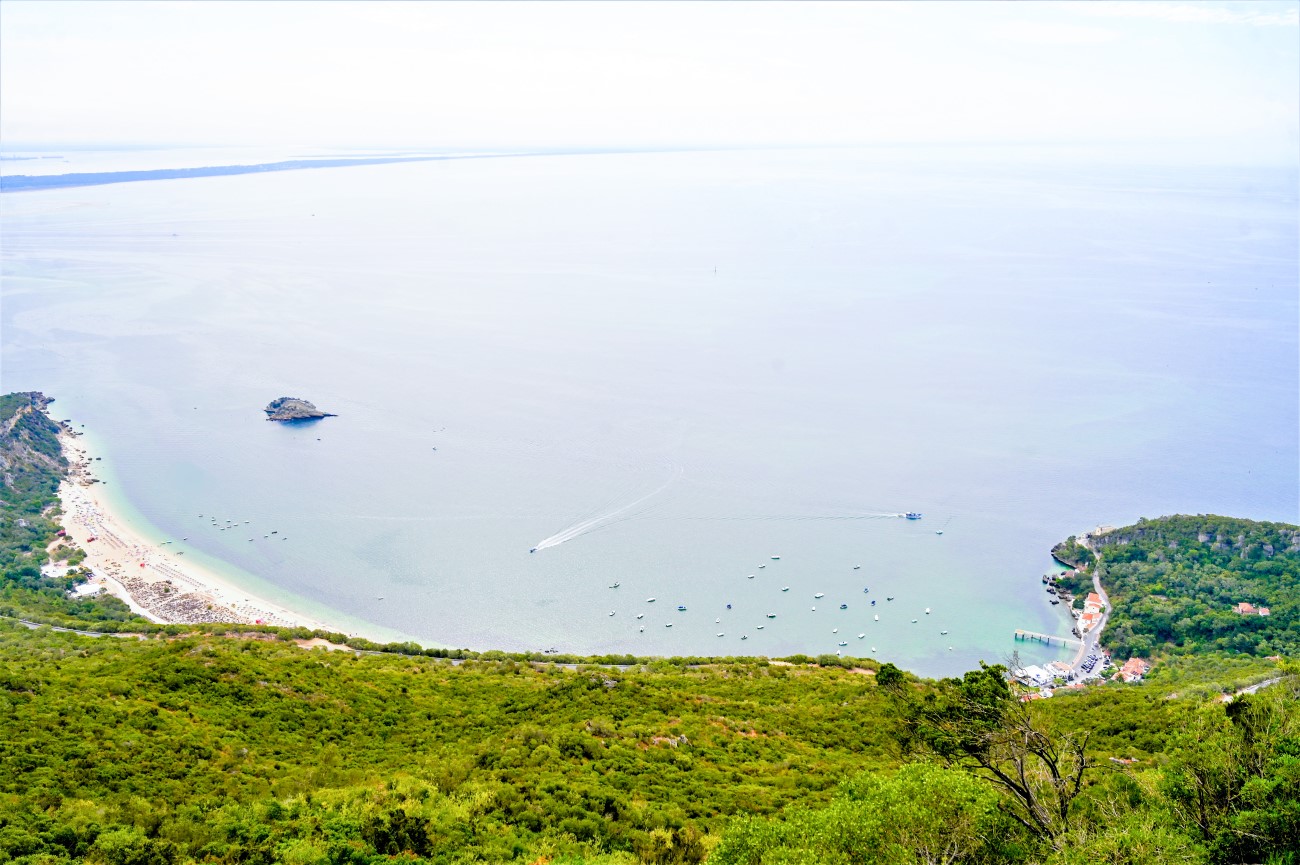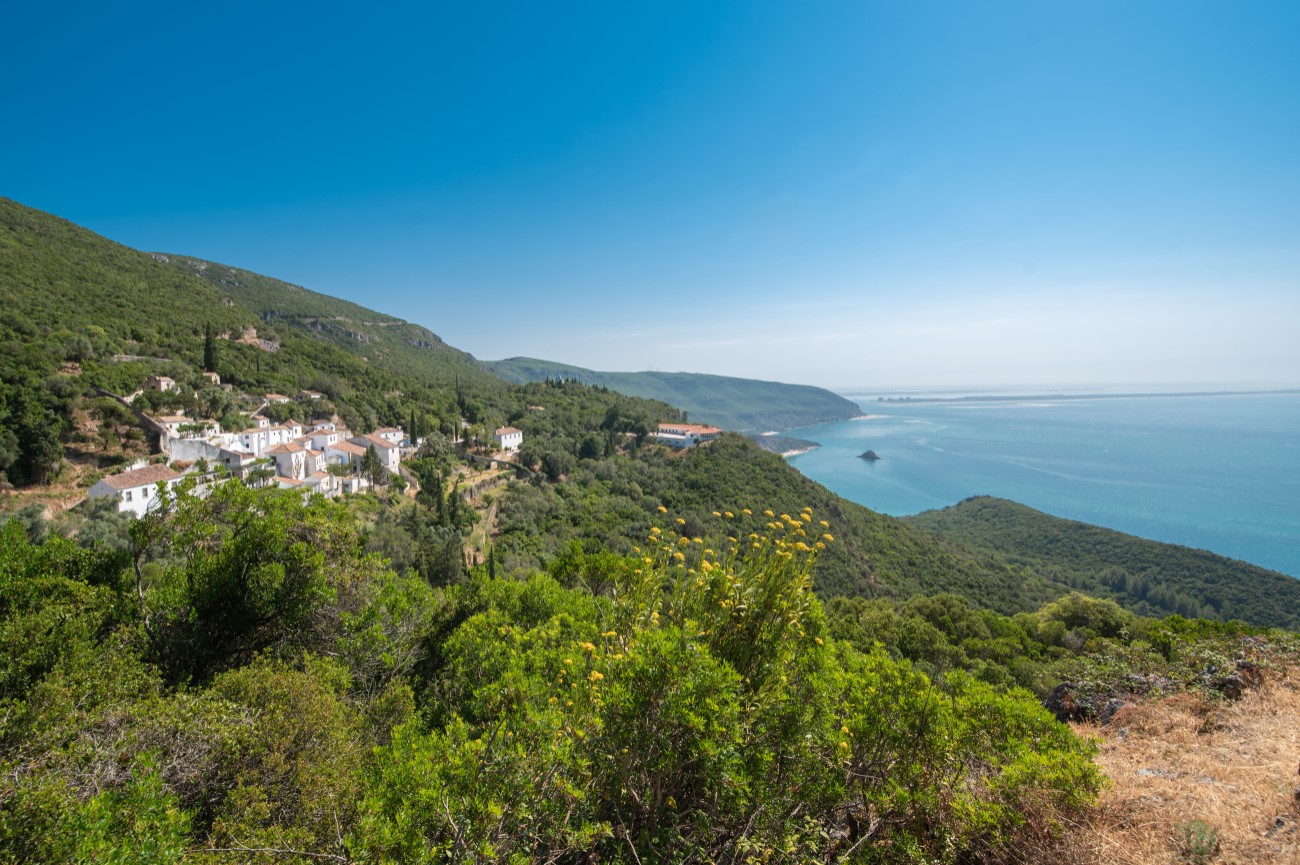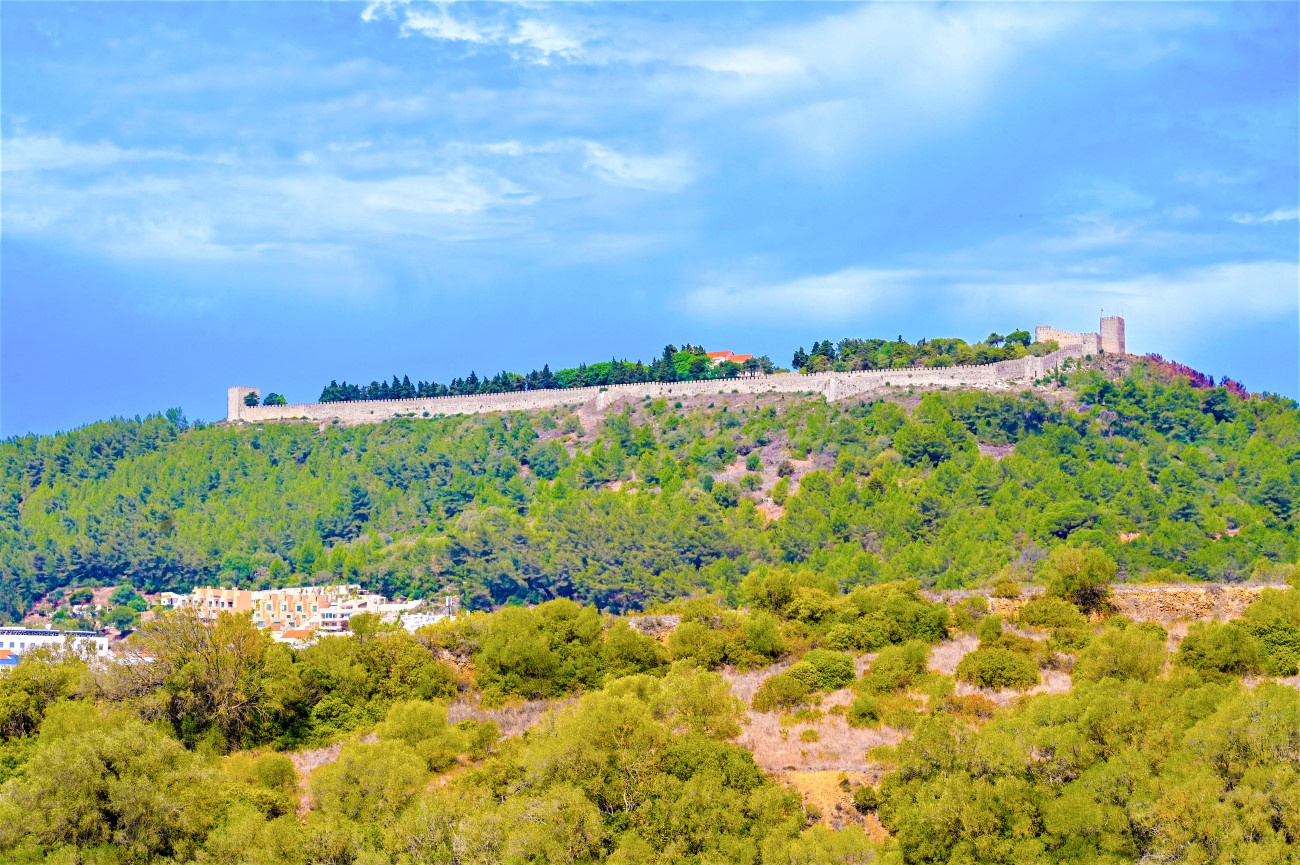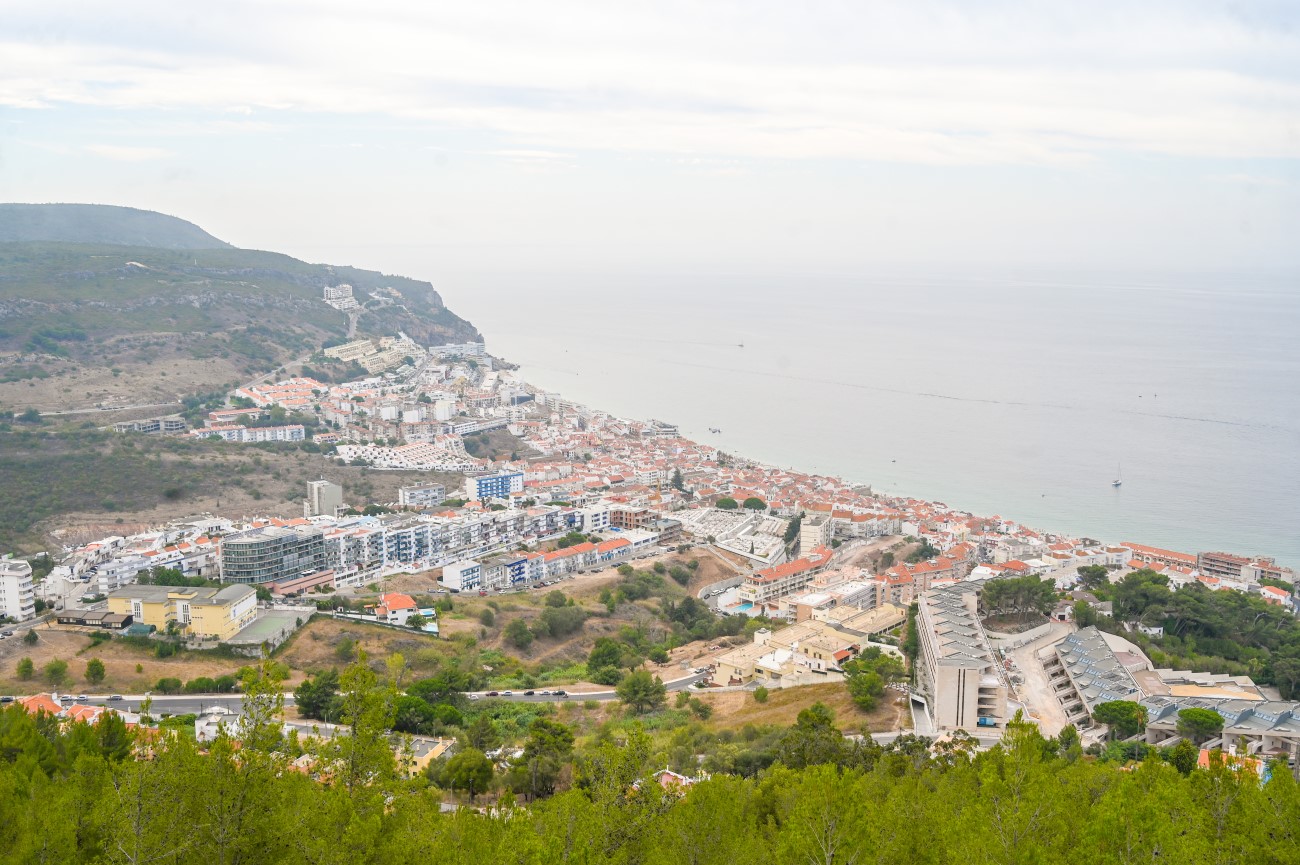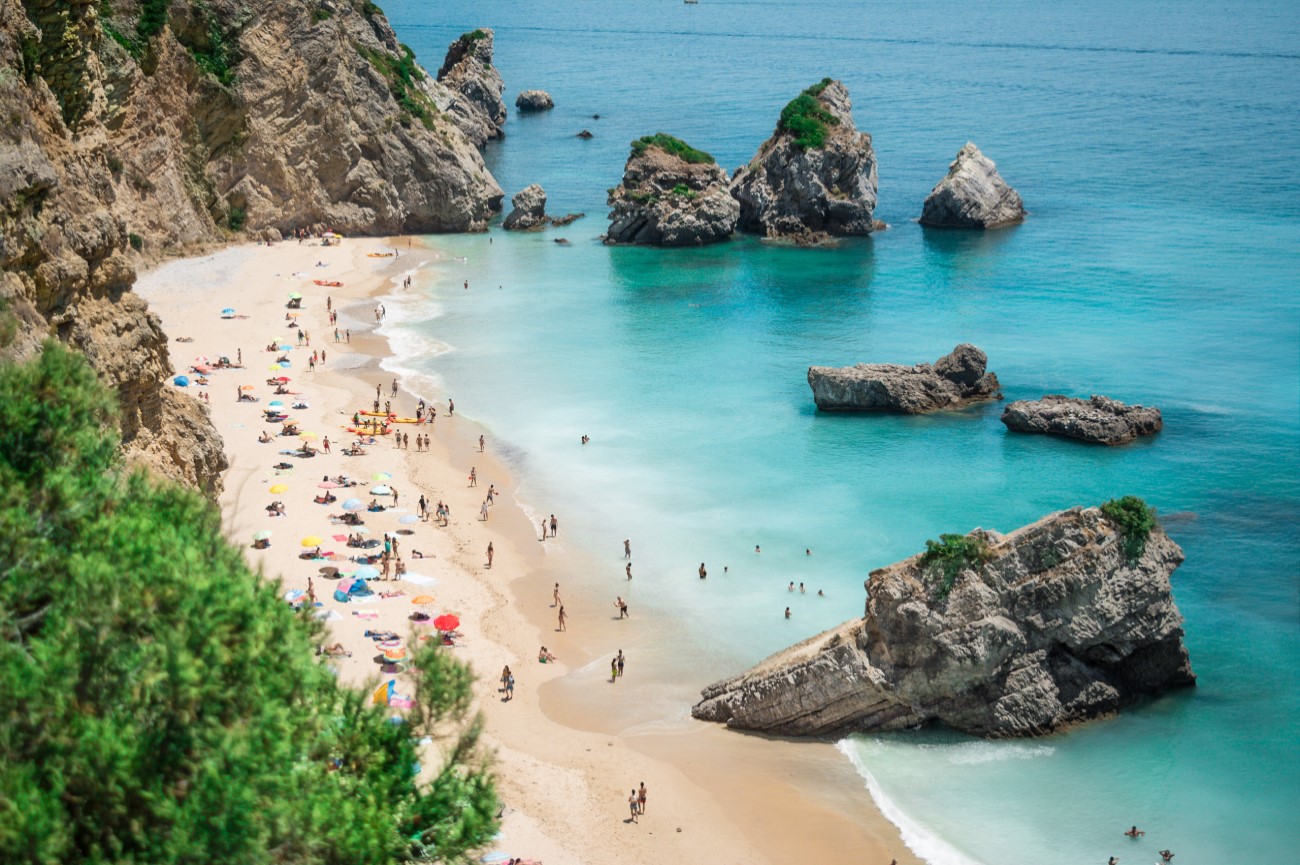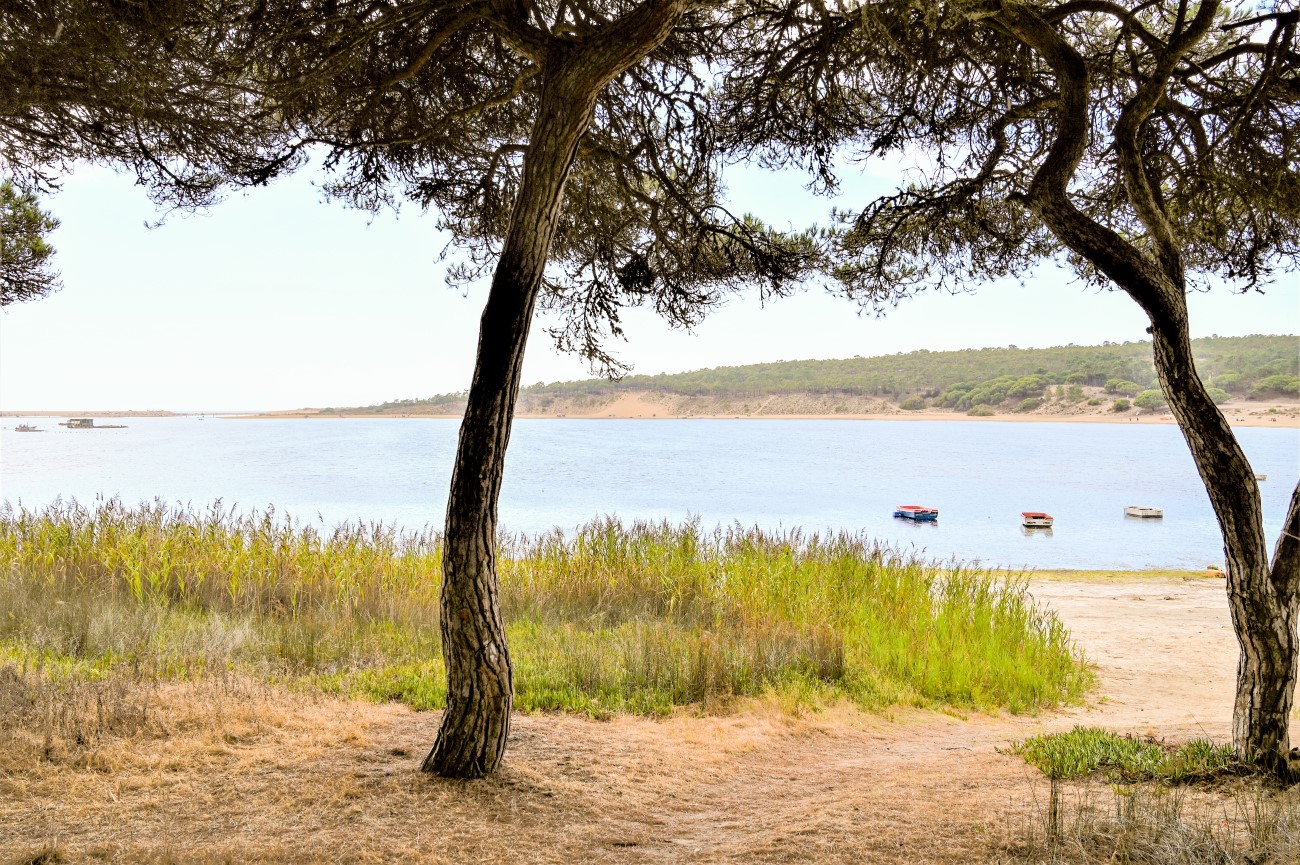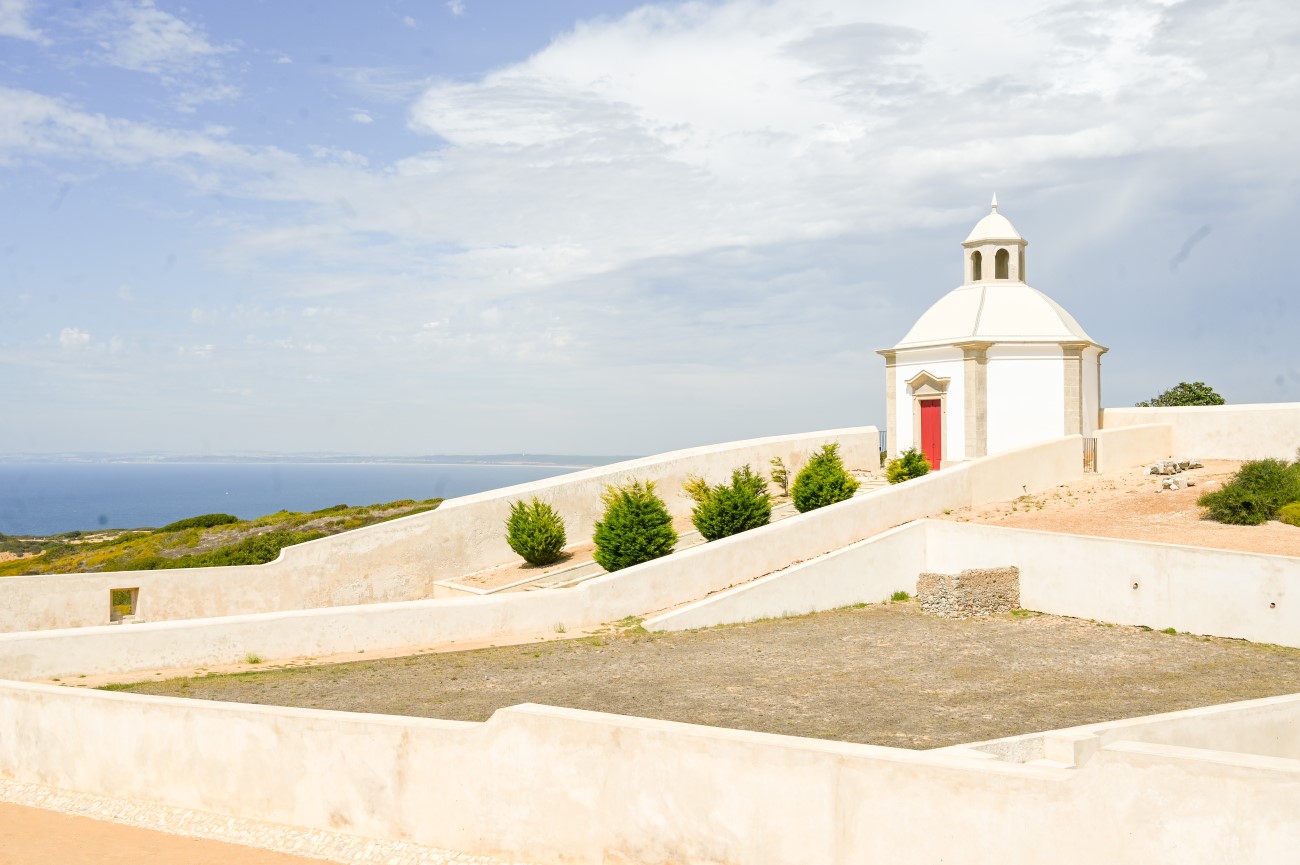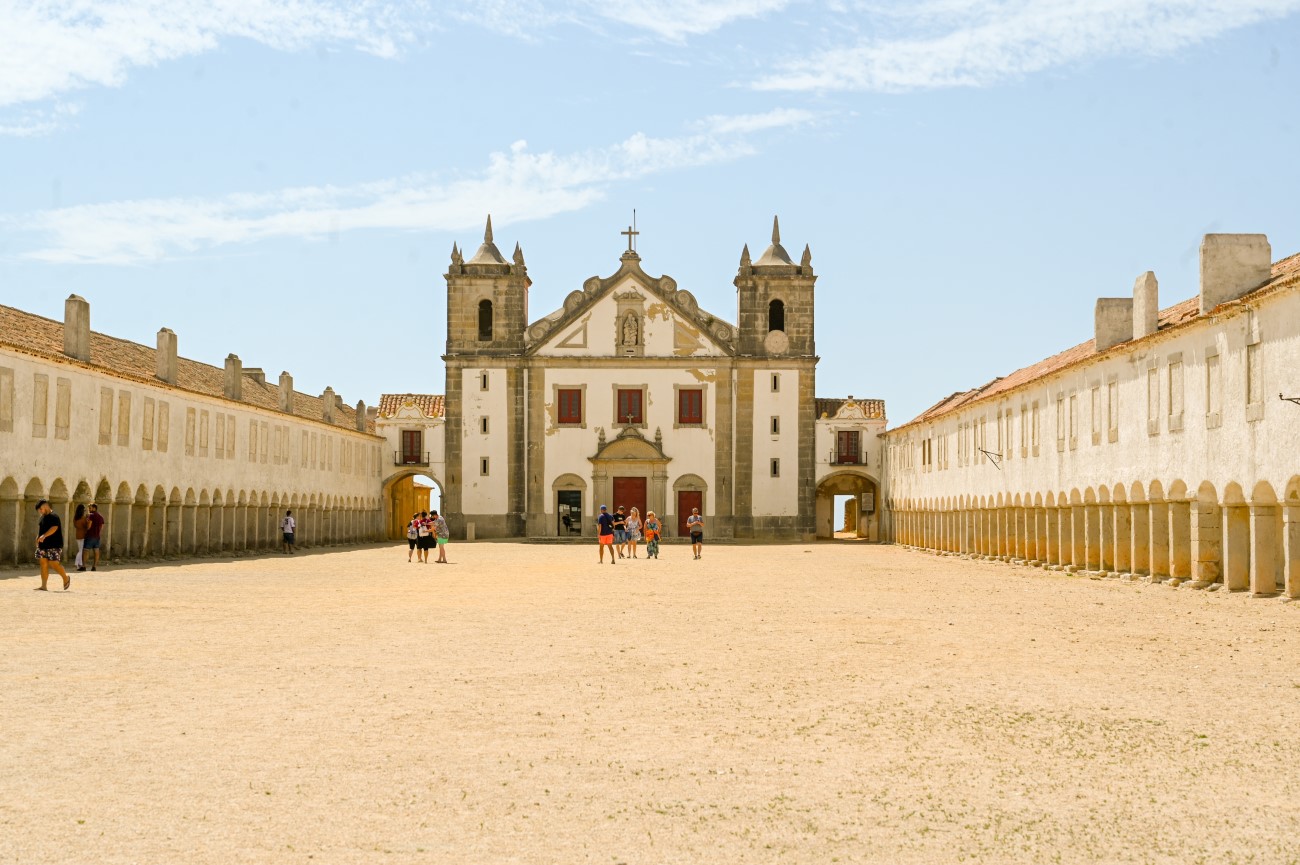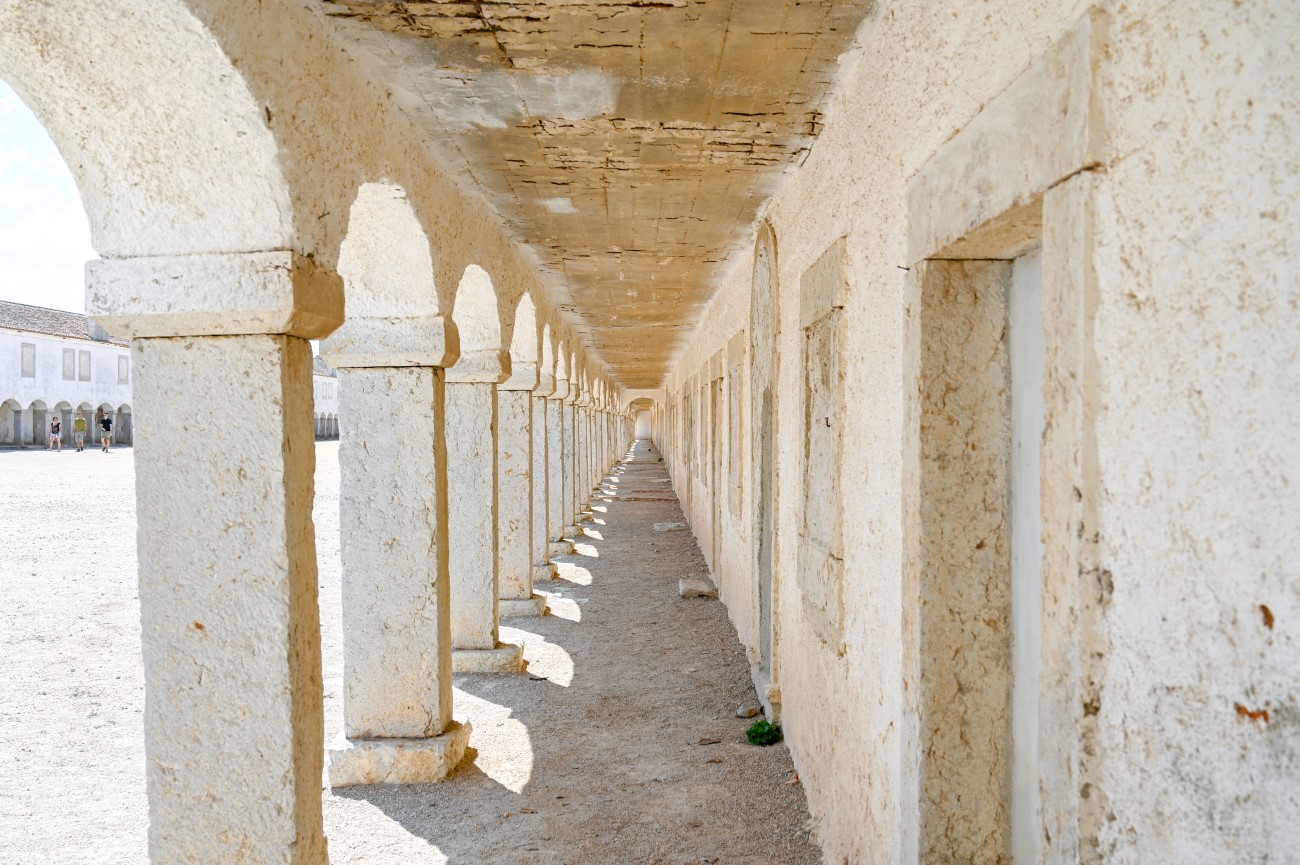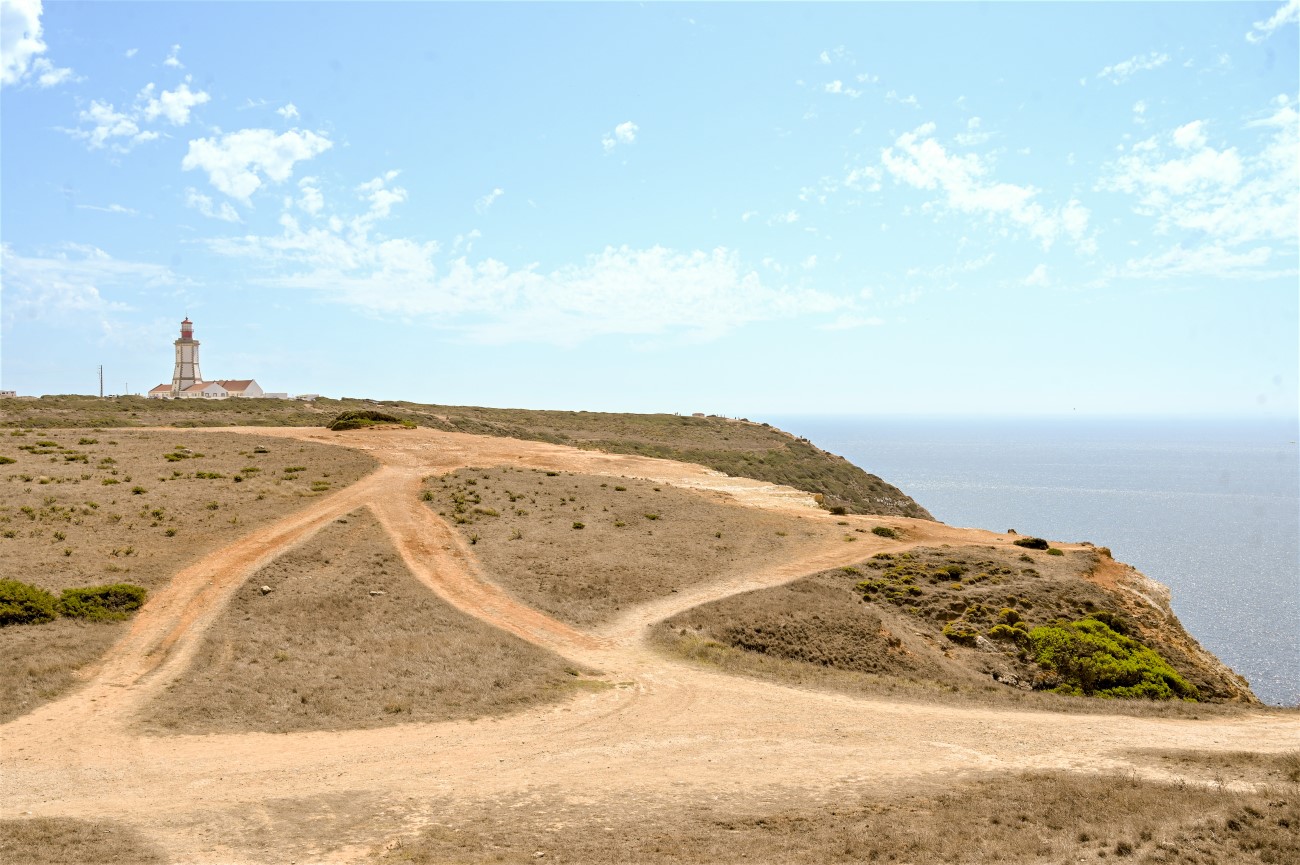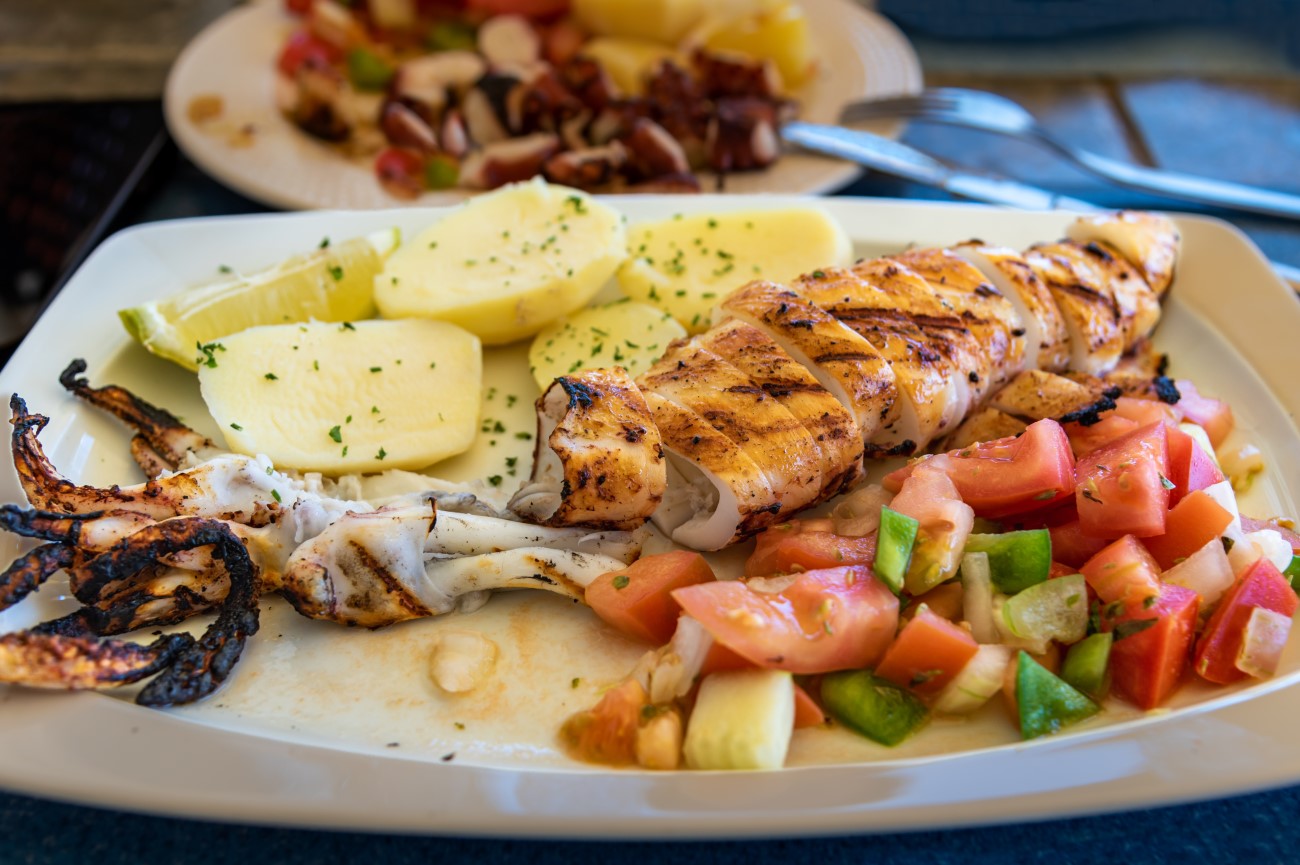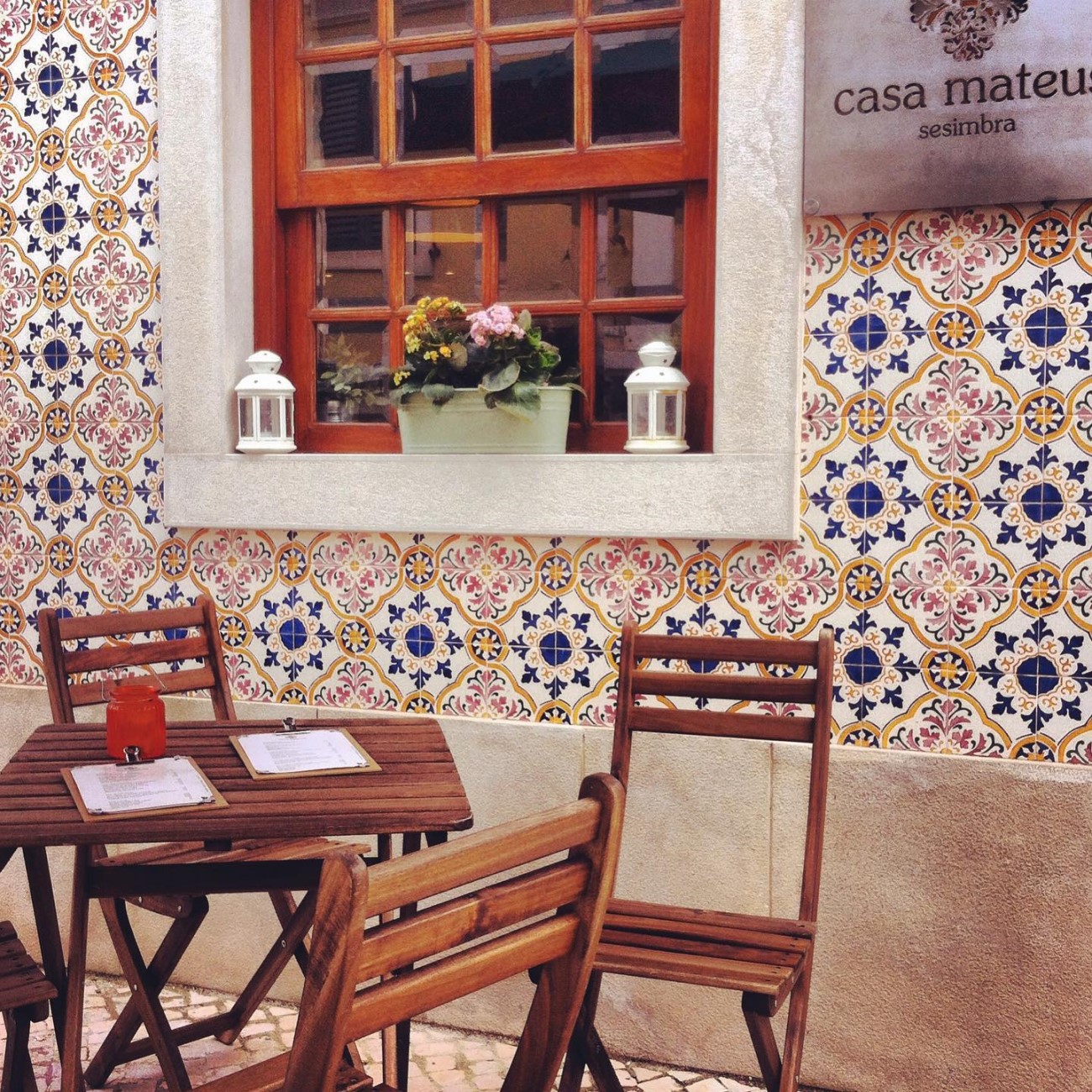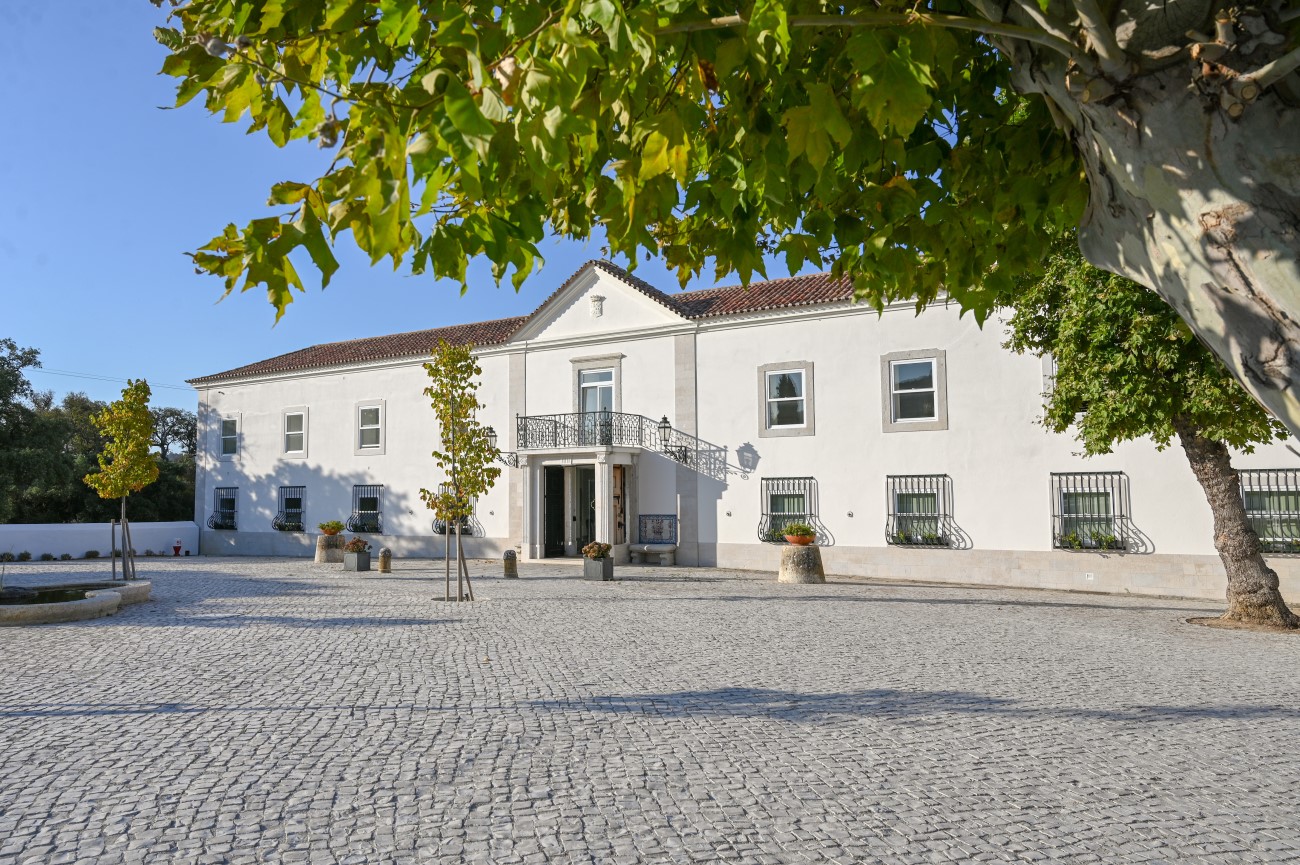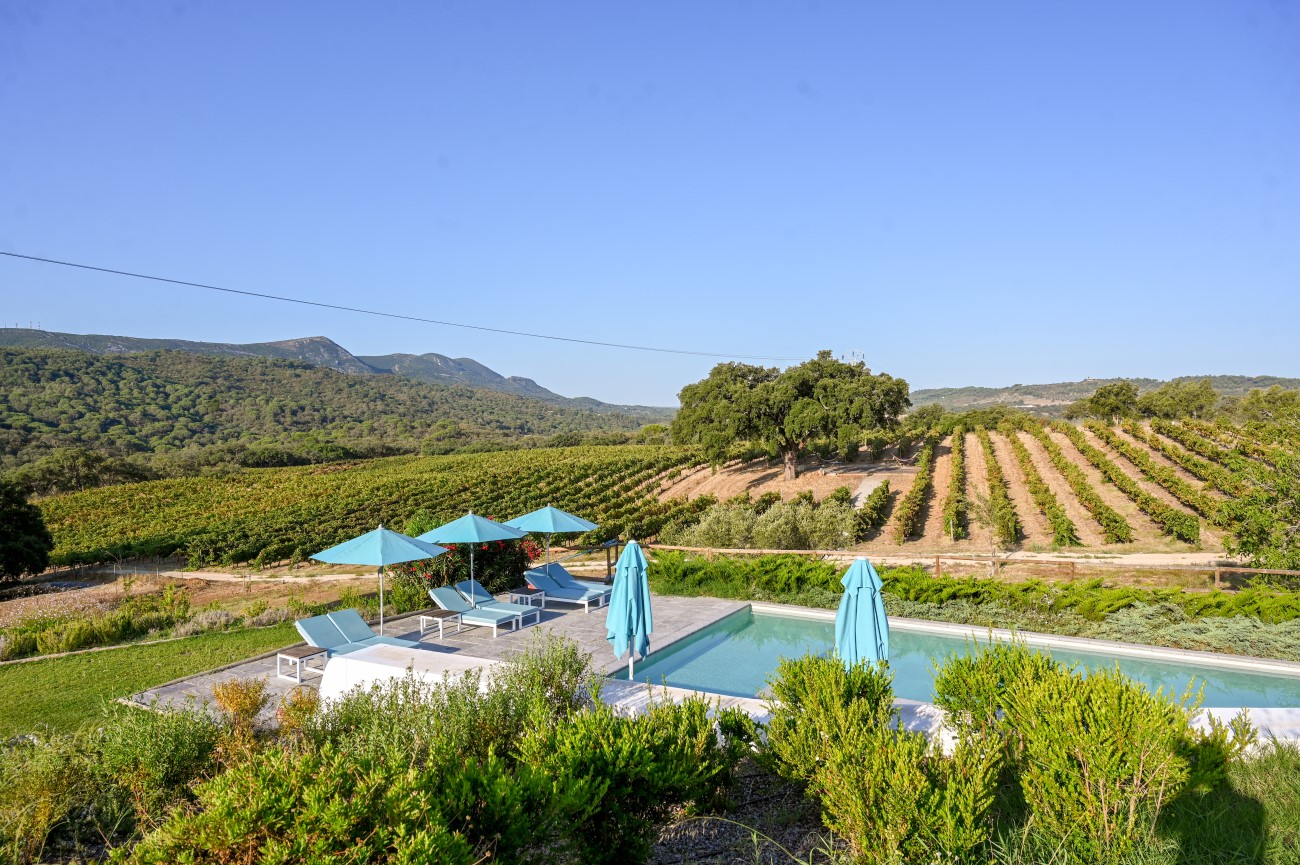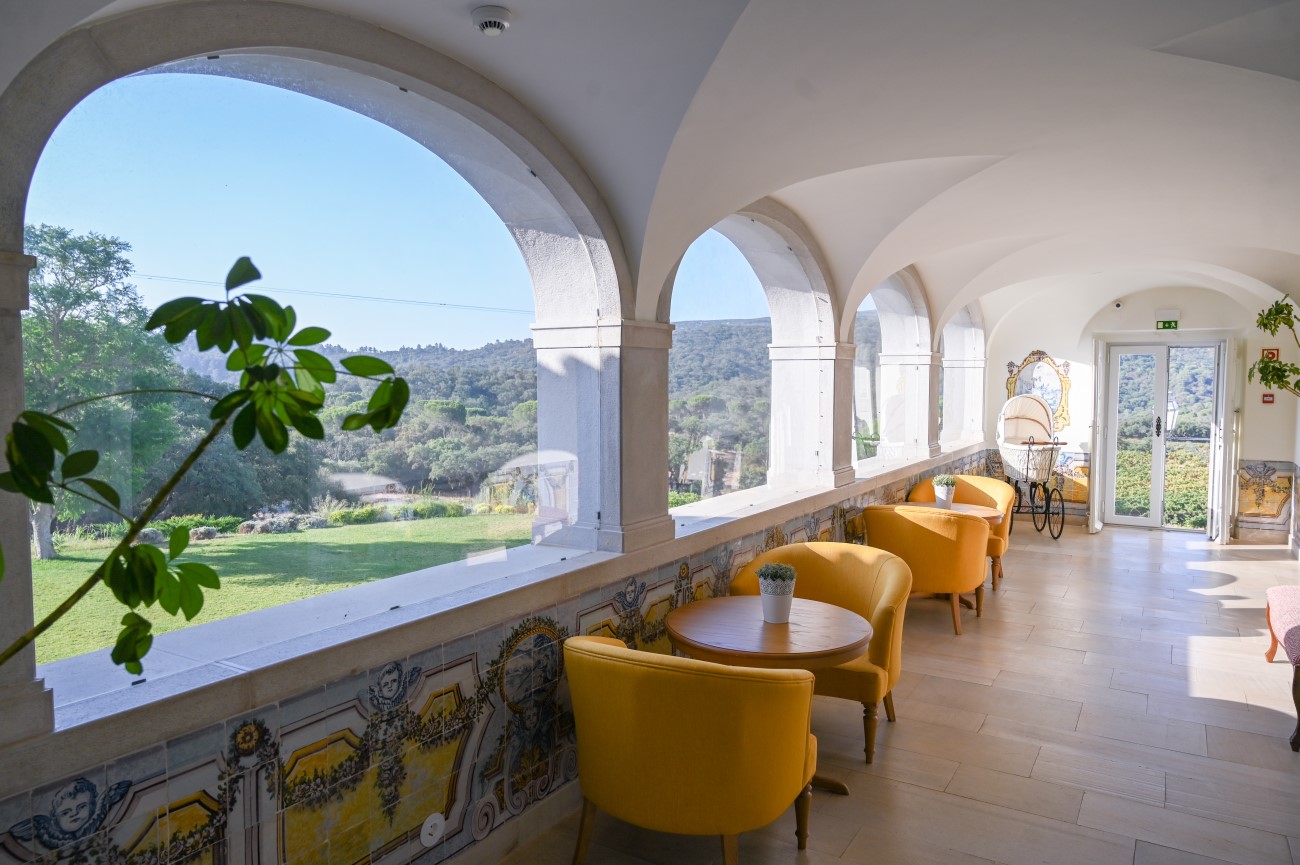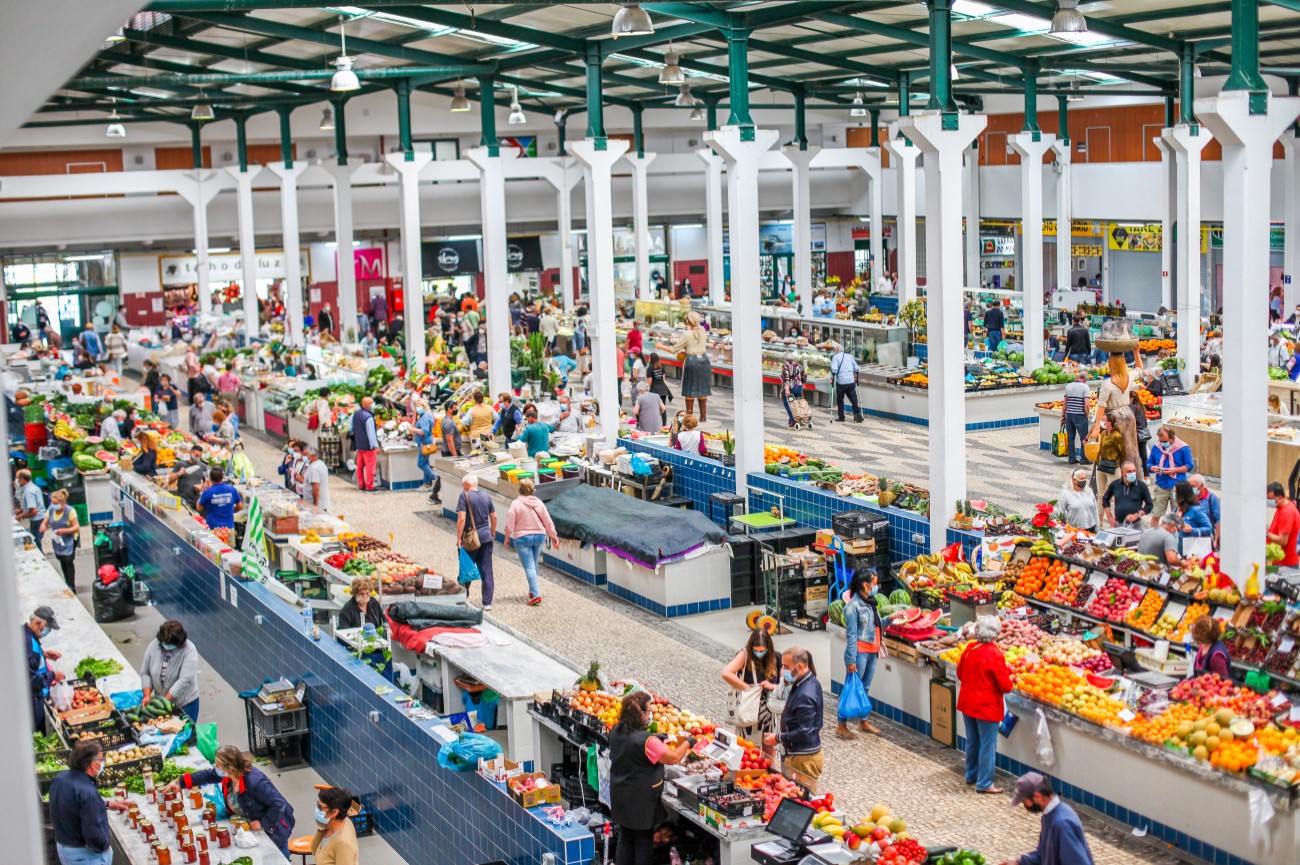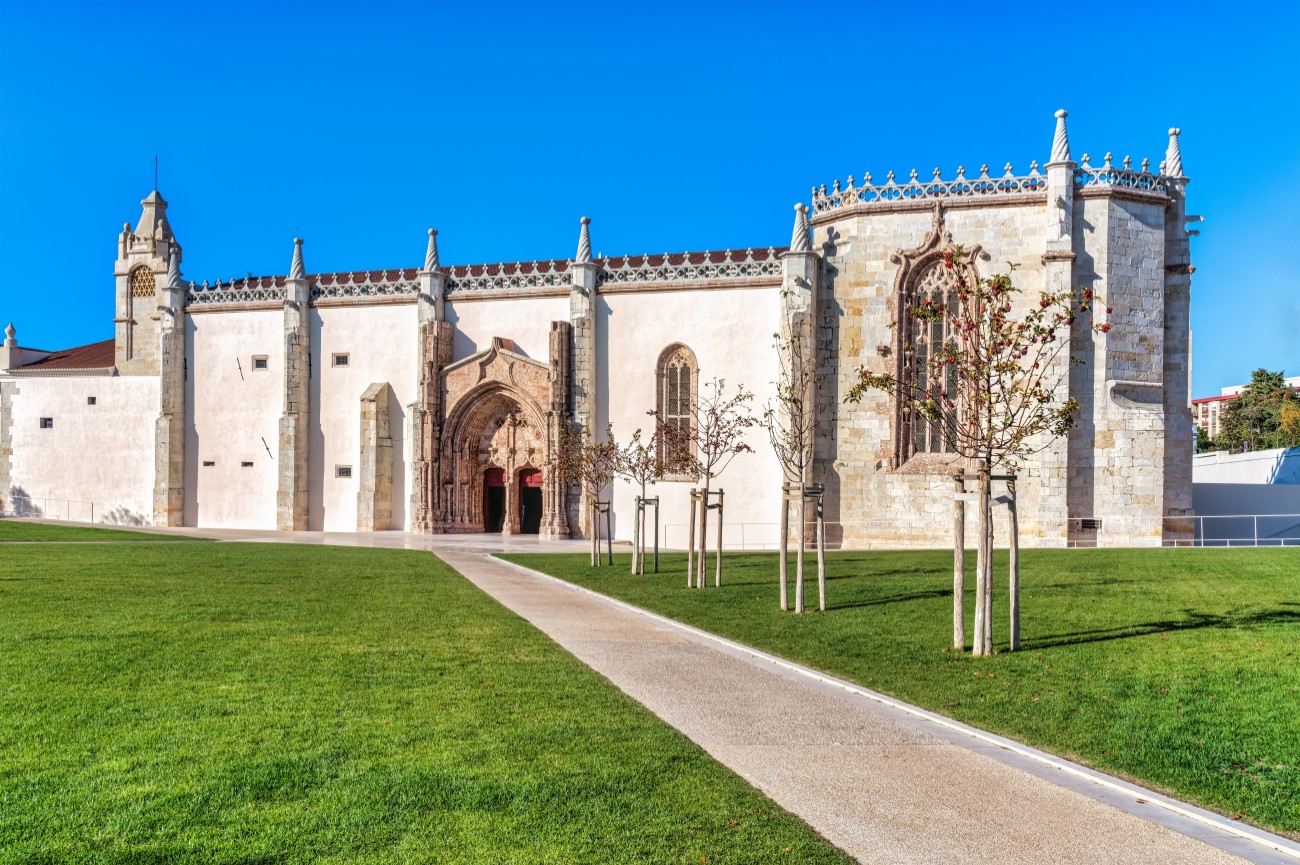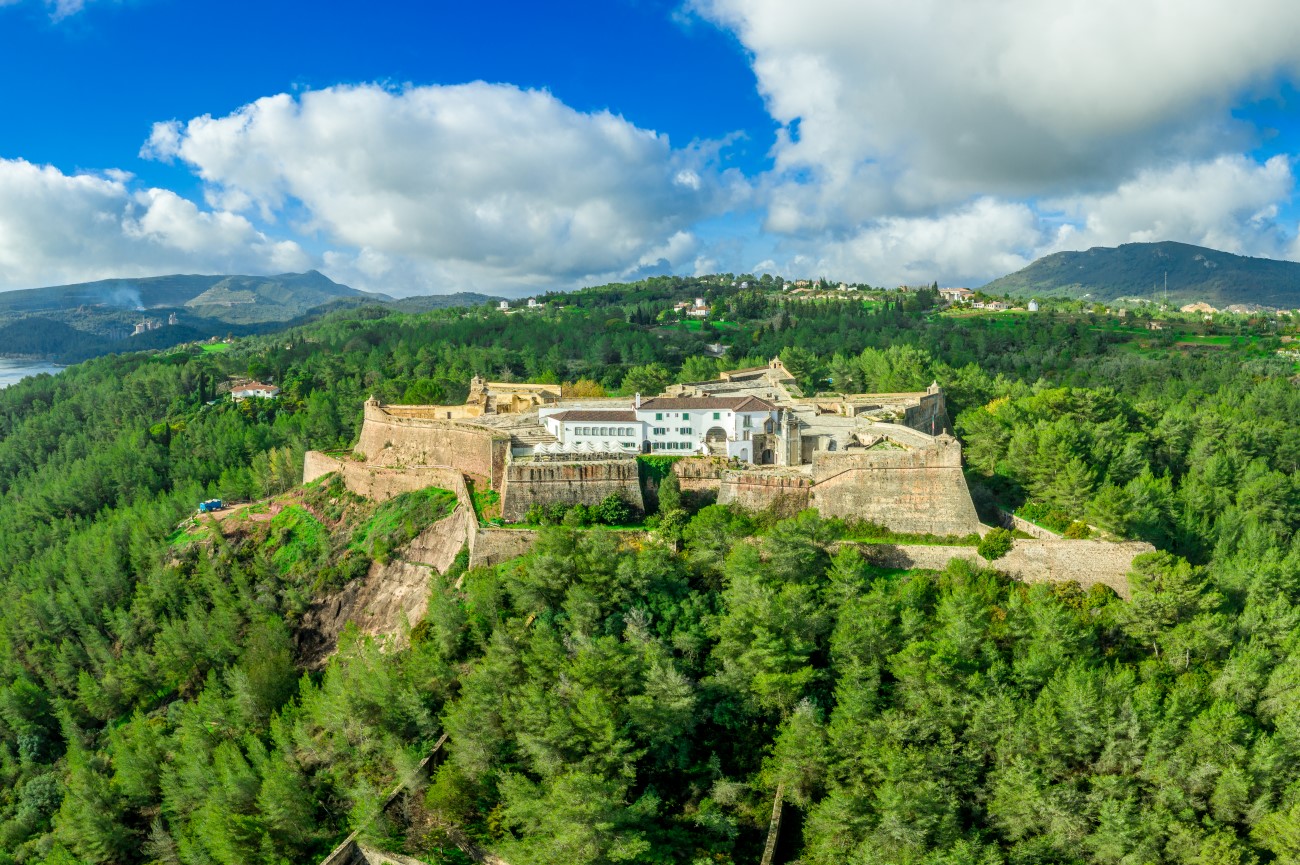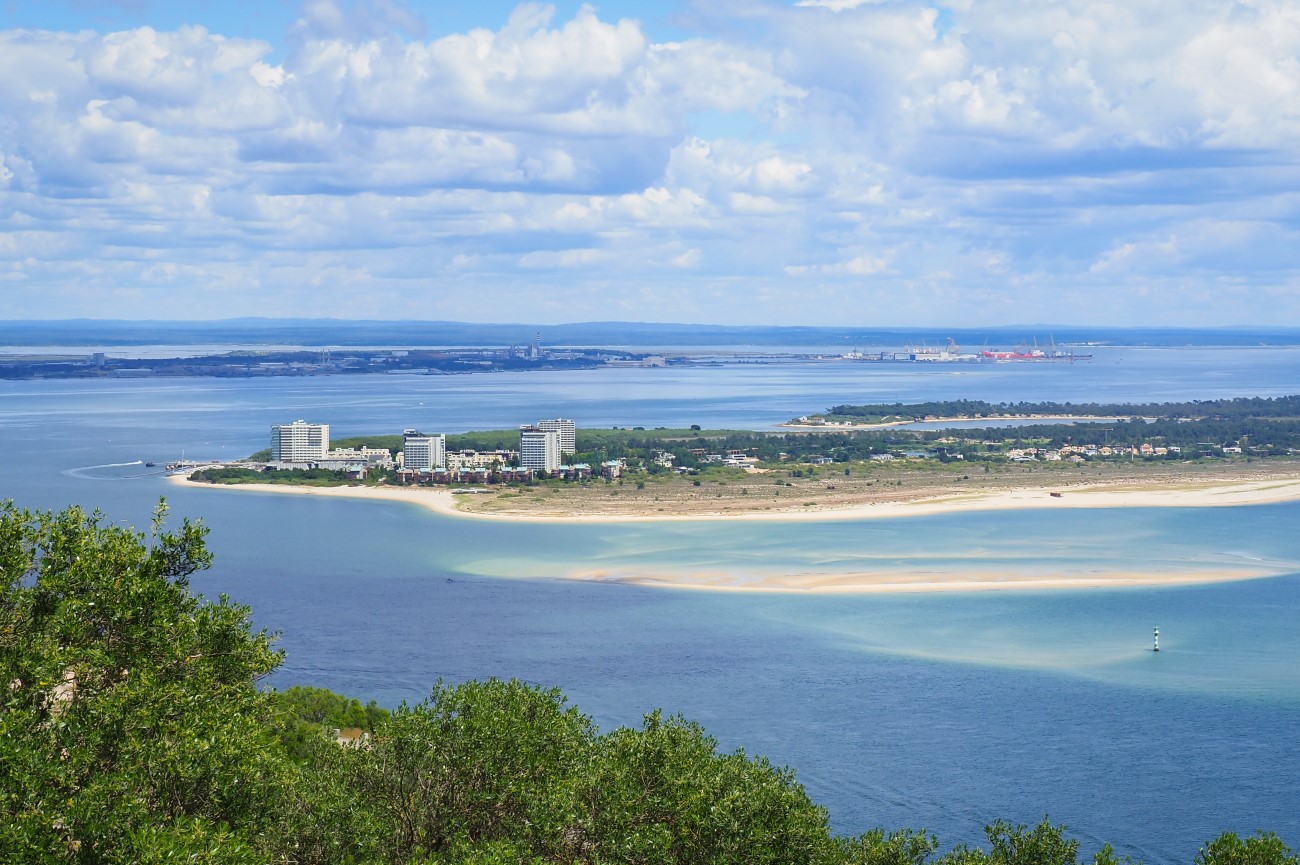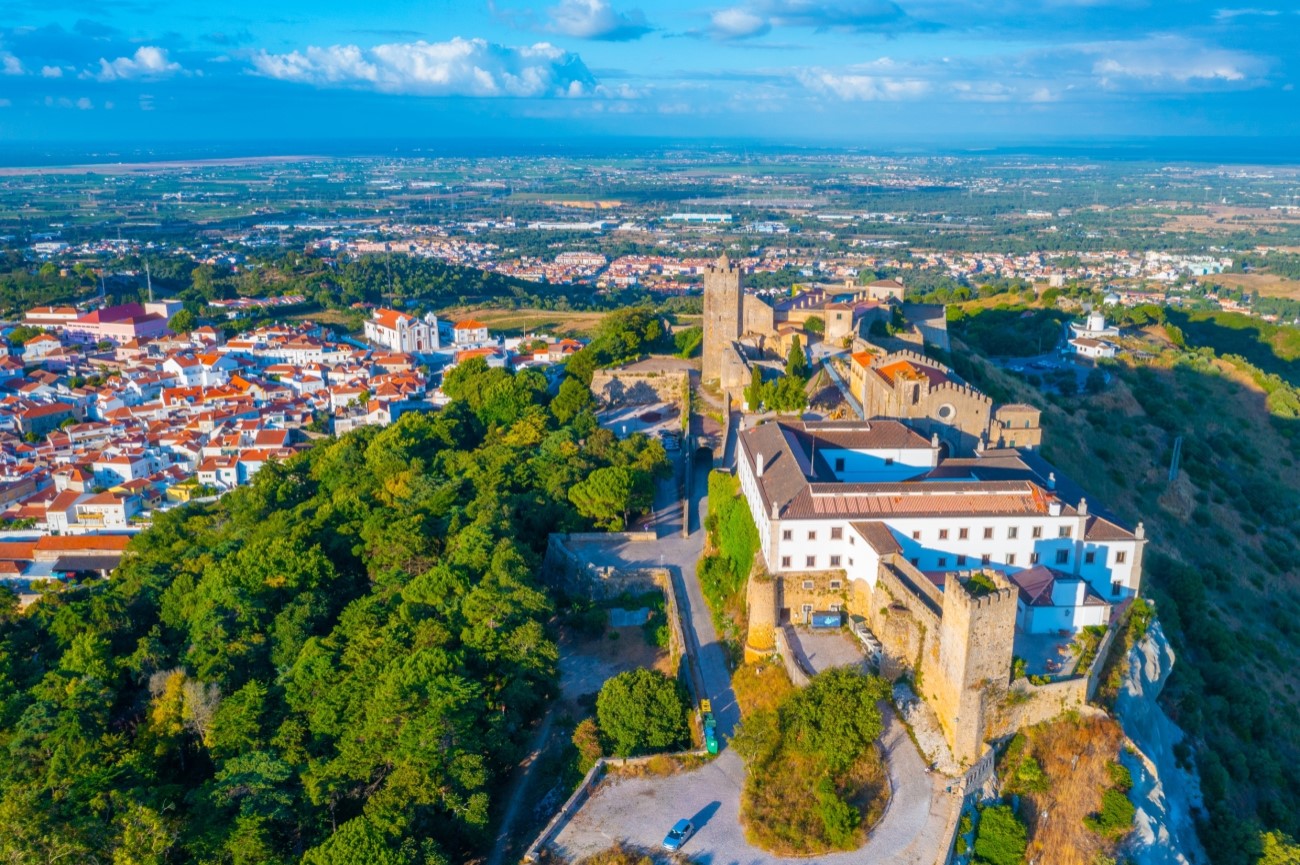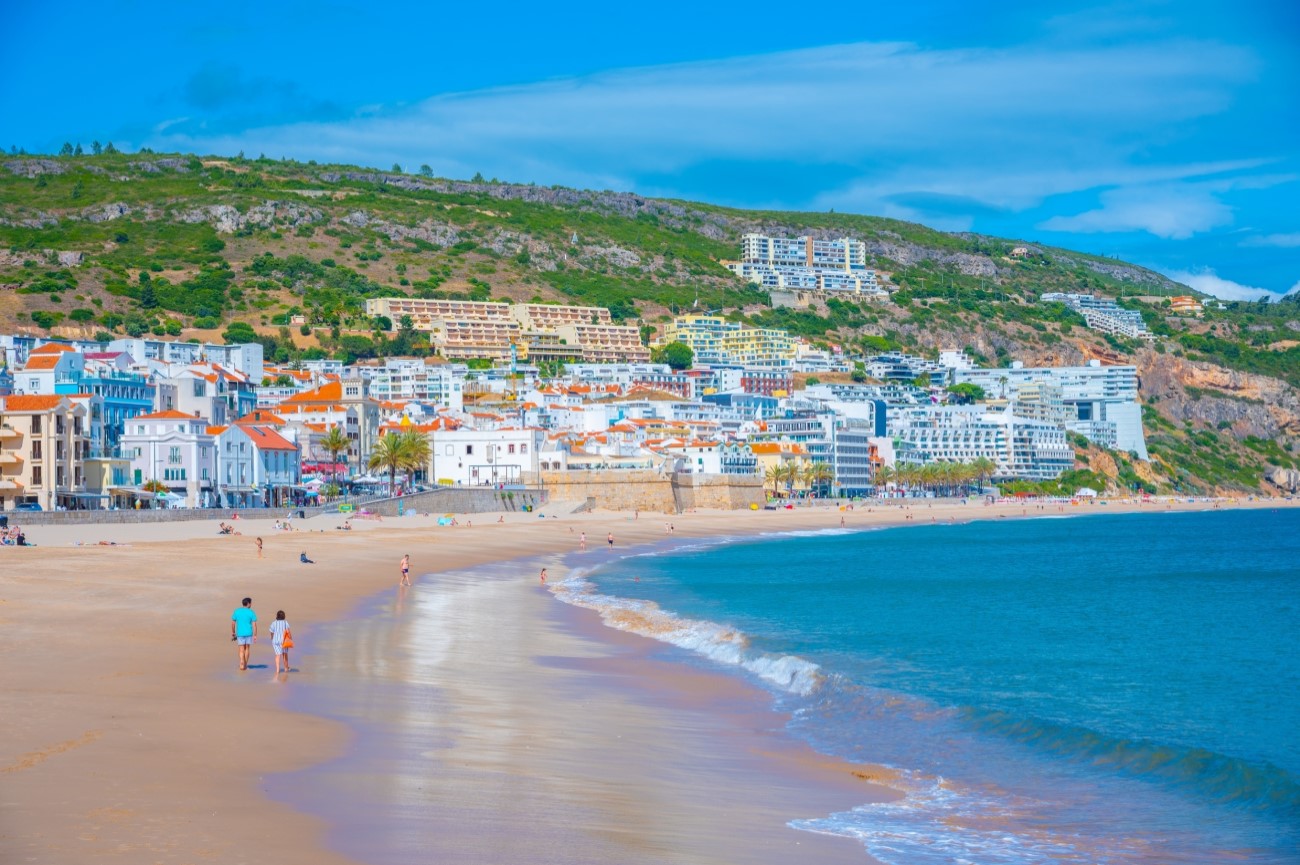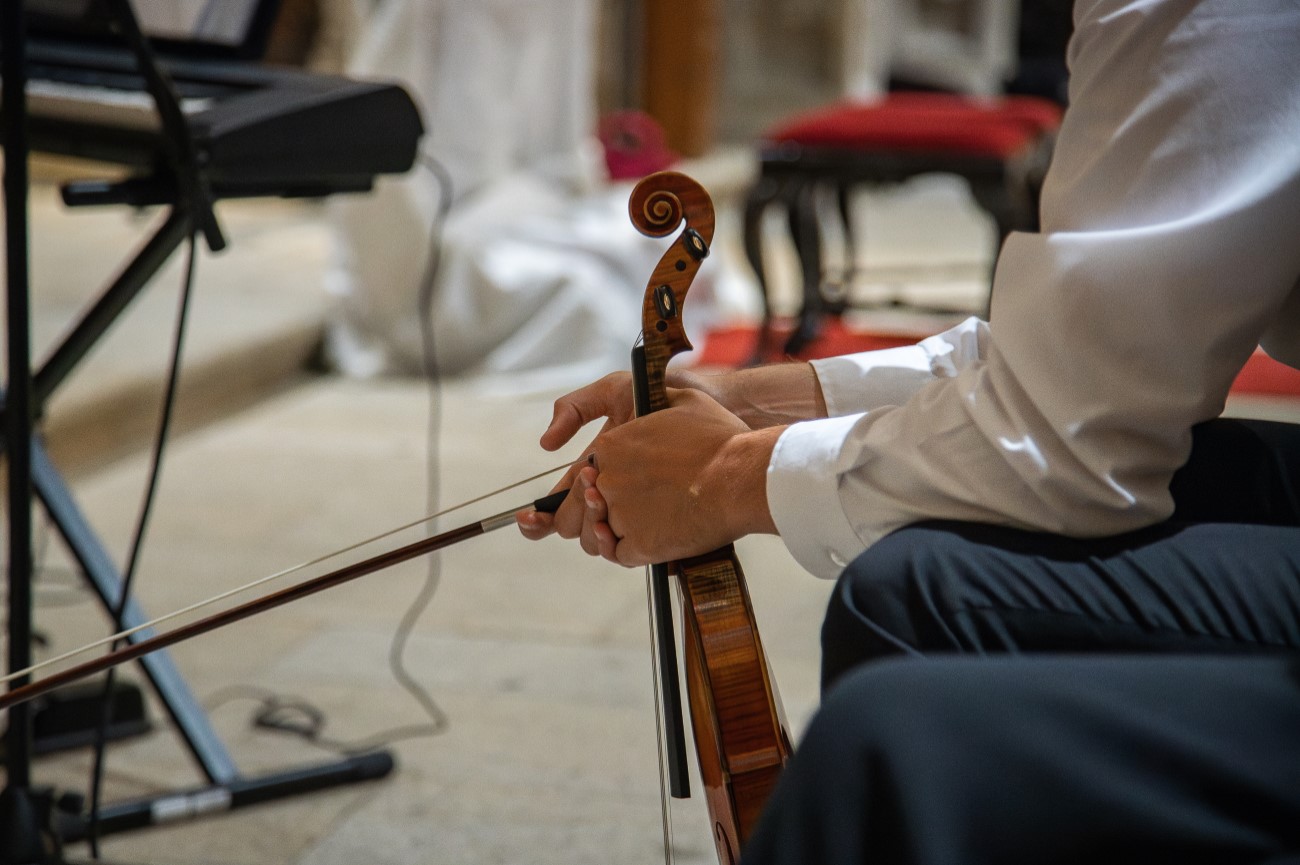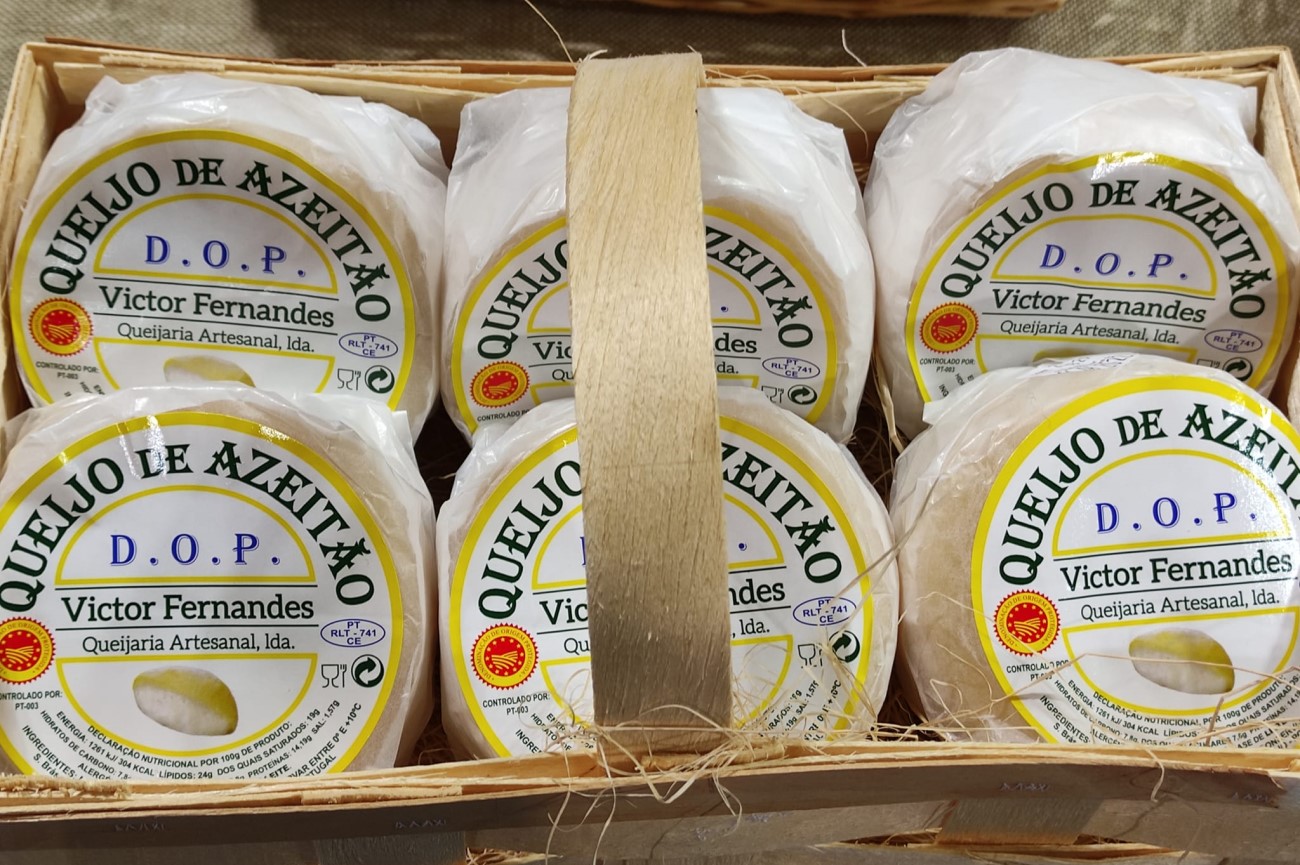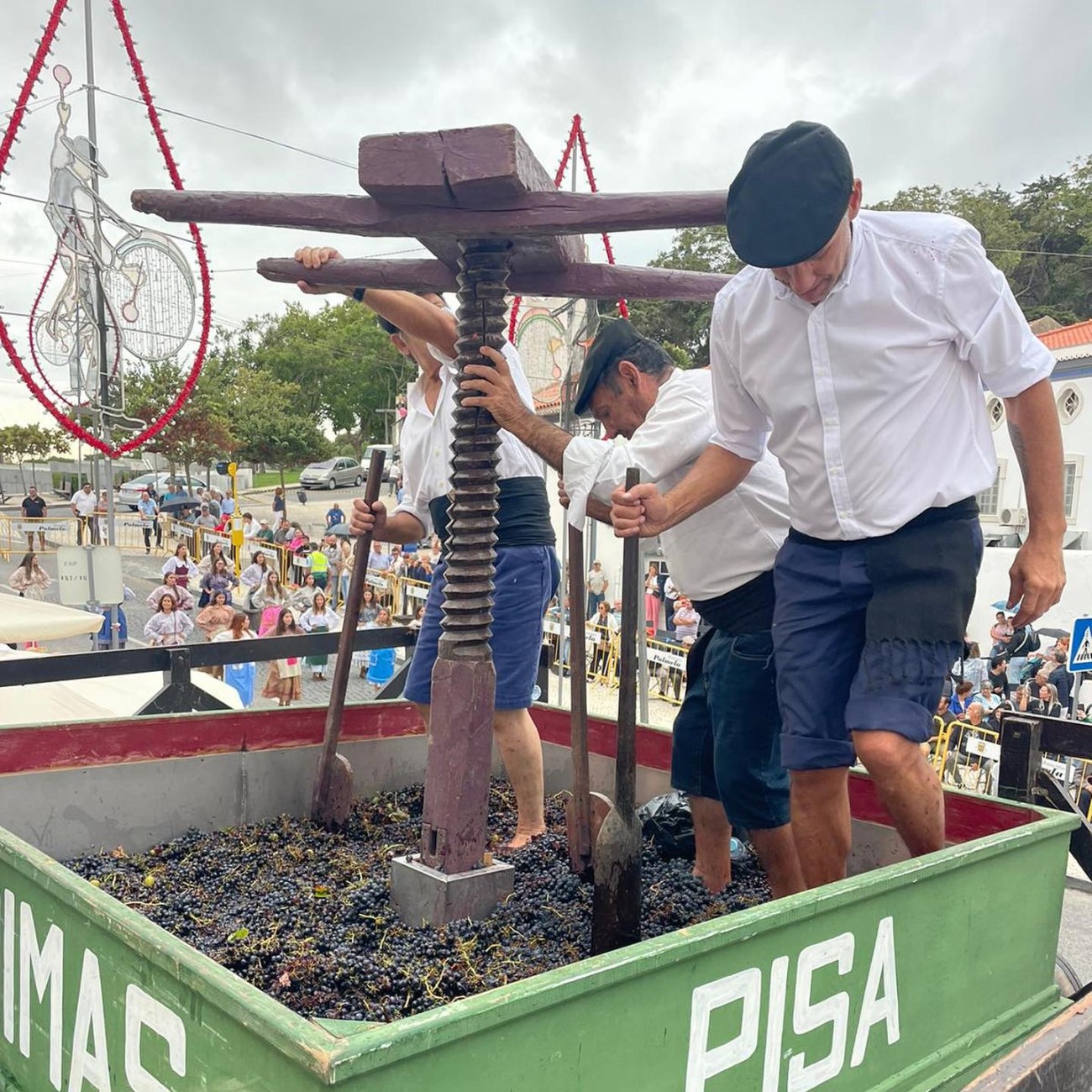A day trip to Azeitão and Sesimbra, Setúbal Tour
Wine tasting tours, delicious cheese, and silk-sand beaches await you on this day trip to Azeitão and Sesimbra.
These two towns are part of the Setúbal region, located 48 kilometres south from Lisbon. The city itself was once an important fishing centre, and while the sardine factories have shut down, the privileged setting connecting the Sado estuary with the Atlantic still makes this one of the most sought-out areas for fresh grilled fish.
The Setúbal peninsula is also home to the Arrábida mountains, a natural park set along the coast that offers pristine beaches, as well as hiking and cycling trails across the hills.
On the border of Arrábida, you’ll find Azeitão, a small town famous for its cheese and wine production. Sesimbra, on the other hand, is a seaside town abound with maritime life. When you visit, don’t miss the chance to go dolphin spotting or join a kayak tour and explore the stunning sea caves.
Things To Do In Azeitão - Morning

Most people come to Azeitão for one of two things — cheese or wine. The first thing you’ll notice as you approach this town is the landscape of vineyards and the old estates attached to them.
Like Sintra, Azeitão was a summer residence for the aristocrats, who built many exquisite houses in the area. With time, some of them turned into wine estates, such as José Maria da Fonseca and Quinta da Bacalhôa. The region is famous for producing Moscatel wine, a sweet fortified drink, often paired with dessert. Its creamy cheese is also an award-winning delicacy, and you can’t leave Azeitão without trying it.
Read our morning tour below, and we’ll show you all the things to do in Azeitão.
Tortas de Azeitão for breakfast
Pretty much every town in Portugal has its own sweet. In Azeitão, it’s all about the Tortas de Azeitão. These sweet rolls are stuffed with a delicious egg yolk paste and sprinkled with a bit of cinnamon. There are many pastry shops where you can try these pastries, but we recommend the Pastelaria Regional Cego. If you don’t like a sweet breakfast, you can always come back after lunch for an afternoon treat.
Learn The History of Azeitão Cheese
To learn more about Azeitão cheese, head to the Museu do Queijo de Azeitão at Quinta Velha Queijeira. Established in the 20th century, this museum/factory produces a buttery cheese that is renowned all over the country. During your tour, you’ll have the chance to see the process of making Azeitão cheese and learn about the history of the factory. In the end, you’ll get to taste a little bit of the cheese as well. While you can sample Azeitão cheese in most local restaurants, it’s nice to have it straight from the source.
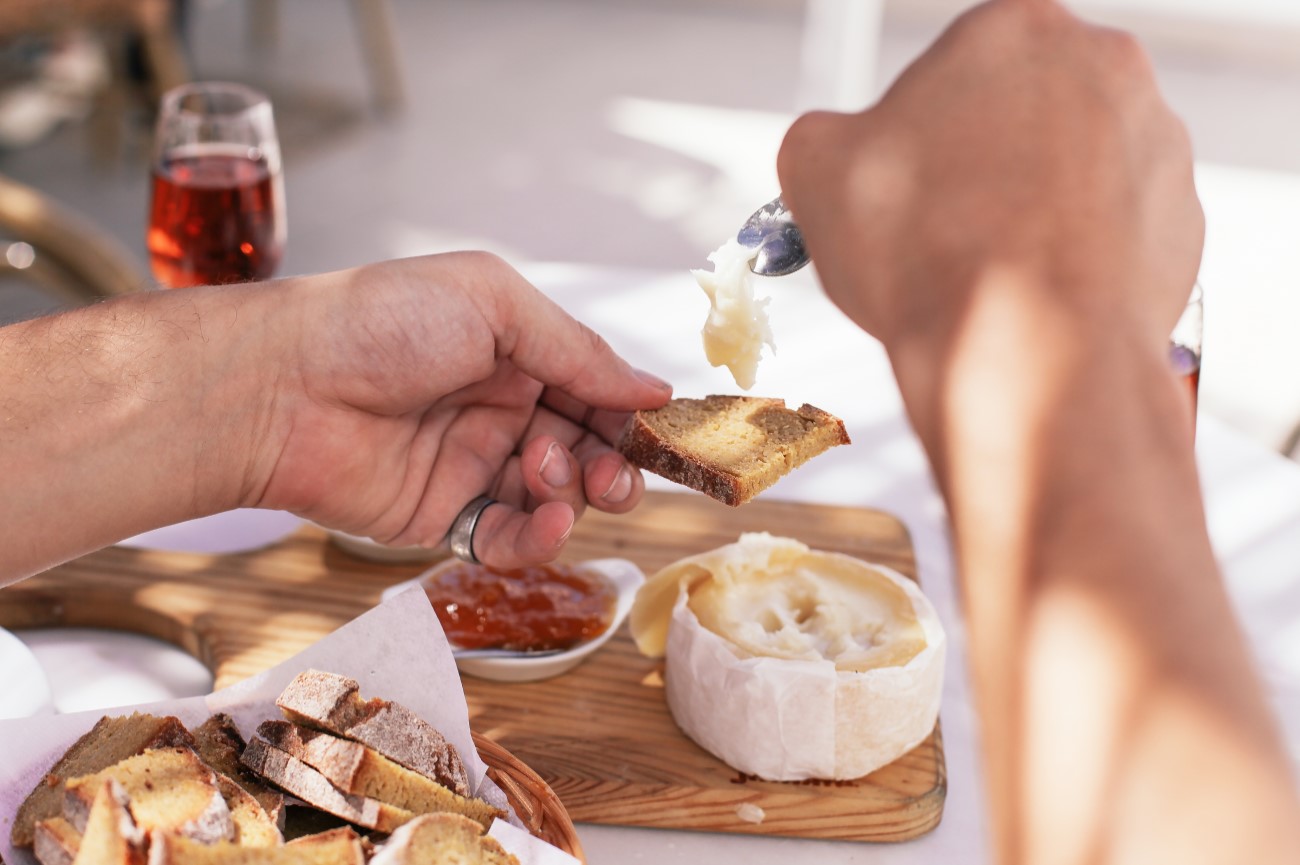 To learn more about Azeitão cheese, head to the Museu do Queijo de Azeitão at Quinta Velha Queijeira
To learn more about Azeitão cheese, head to the Museu do Queijo de Azeitão at Quinta Velha Queijeira
Visit the Azeitão Wineries
One of the things you can’t miss in Azeitão are the wineries. Start with a visit to the José Maria da Fonseca. Established in the 19th century, it's the oldest table wine company in Portugal.
A tour includes a visit to the ancient wine cellars, like the Adega dos Teares Velhos, which holds the barrels of the old moscatel. Some of these barrels have been resting here for over 100 years! You’ll then be able to sample a few wines, including white, red, and moscatel. They also have a wine shop in case you decide to take a bottle back home.
Then, make your way to Palácio da Bacalhôa for another wine tour.
The history of this estate begins much earlier, as it used to belong to the Royal Portuguese family in the 15th century. Over the years, the palace had many owners who kept adding their own touch to the property, but the Renaissance style and the hand-painted tiles remained.
You can choose to visit just the wine cellars or add a visit to the palace to admire the private art collection inside.
Paint your own tiles at Azulejos de Azeitão
Only a few minutes away from the wineries is the workshop Azulejos de Azeitão. They reproduce tiles with antique designs from European, Islamic and Chinese references. If you want to learn how to make tiles, this is the place to go. You can buy a finished piece to take home or contact them in advance and experience painting your own tile.
Where To Eat In Azeitão
- Pastelaria Regional do Cego: Beyond the traditional tortas de azeitão, this café offers sandwiches and toasts with Azeitão cheese. Ideal for a lighter meal.
- Taberna de Azeitão: You’ll find this traditional restaurant just a few minutes from the José Maria da Fonseca winery. It serves a mix of meat and fish meals, with a focus on grilled dishes.
- Chef Stories: On the outskirts of the town is this modern restaurant specialising in meat dishes. You can choose a variety of cuts, from sirloin to tomahawk.
- Casa Nobre d'Azeitão, a typical Portuguese restaurant that specializes in both meat and fish dishes.
Map for this Azeitão tour, Portugal
Things To Do In Sesimbra - Afternoon

Golden sand beaches and fresh grilled seafood lure visitors to Sesimbra every summer. Aside from swimming and eating, there are a lot of things to do in Sesimbra. You can hike through the Arrábida mountains or join a boat tour along the coastline to capture the local dolphins.
The coast of Sesimbra is also regarded as one of the best diving spots in Portugal, thanks to its unique maritime environment. If you’re traveling to Sesimbra by car, we suggest following Estrada de Escarpa for the best sea views. We spent an afternoon in Sesimbra, but there are enough activities here to keep you busy for a whole day!
Take a Hike Through Serra da Arrábida
Serra da Arrábida is one of Portugal's most stunning natural parks. The best way to explore the park is to take a hike or cycle across the hills. There are many hiking trails in Arrábida. If you want a short walk, you can start at Portinho da Arrábida, a white sandy beach on the foothills of the mountain, then continue along the sand to Praia do Creiro. From there, you can take a trail through the woods towards Praia dos Coelhos and enjoy the secluded surroundings. For a privileged view of the beaches, make sure to stop by the Miradouro Portinho da Arrábida as well. (see Trilho das Praias da Arrábida in this article)
Step Inside The Sesimbra Castle
Before heading to the centre of Sesimbra, make a quick stop by the castle. Set 230 metres above the village, the castle offers a panoramic view of the coastline below. There is no entrance fee, so you can take your time to walk around. At the centre of the castle, you'll find a small Baroque church. It seems modest from the outside, but step inside, and you'll be amazed by the blue and white tiles adorning the walls.
Explore The Sesimbra Beaches
The coast of Sesimbra is famous for its glorious beaches. The most popular ones in the area are Praia da Califórnia and Praia do Ouro, both within walking distance from the town.
Spend some time at Praia da Califórnia enjoying the calm sea waters, and then head to Ribeira do Cavalo. There are several ways to reach this hidden beach, but the easiest one is to take a boat from the Sesimbra port. Within 10 minutes, you’ll find yourself in a paradisiacal setting, away from the crowds. If you want, you can also take a boat trip through the sea caves or join a kayak tour to get an even closer look!
Drive up to Lagoa de Albufeira
Another beach near Sesimbra worth visiting is the Lagoa de Albufeira. It takes 30 minutes to get there from the centre of Sesimbra, but it’s worth the drive. The beach stands between the Atlantic and a big lagoon, which is part of an Ecological Reserve. It’s a good spot for birdwatching, but also to practice water activities such as kitesurf and windsurf. Another 30 min drive from Lagoa de Albufeira and you are at the stunning Costa da Caparica, a modern resort town very popular with the Portuguese and not so well known by foreigners.
Watch The Sunset at Cabo de Espichel
On the edge of Sesimbra, there’s a rocky headland known as Cabo de Espichel. It's the ideal spot to watch the sunset. As you arrive, you can’t help but admire the natural beauty around you, from the crystal clear waters to the golden cliffs.
There are a few attractions in the area, including the Church of Nossa Senhora do Cabo, a small chapel, and the lighthouse. Take a walk around the cliffs, and you’ll be able to see two sets of dinosaur footprints: Pedra da Mua and the Lagosteiros.
Map for this Sesimbra tour, Portugal
Where To Eat in Sesimbra
- Lobo do Mar: Set near the Sesimbra docks, this seafood restaurant serves all kinds of fresh grilled fish, from mackerel to seabass.
- Casa Mateus: Another popular seafood restaurant in the centre of town is Casa Mateus. Highlights include the caldeirada à pescador (fish stew) and the strawberry and basil mousse for dessert.
Where To Stay Near Azeitão and Sesimbra
To make the most of your trip to Azeitão and Sesimbra, you can stay at a local hotel like Sana Sesimbra Hotel or Hotel Casa Palmela. The first one is set right on the beachfront of Sesimbra so you can go for a swim anytime you want. Besides the great location, the hotel also provides other facilities, such as a rooftop swimming pool and a wellness centre. Casa Palmela, on the other hand, is tucked away in Serra da Arrábida, offering rooms with mountain views, and several experiences like horseback riding and cycling trips.
Fancy a vacation rental instead of a hotel? Here is our selection of the best vacation rentals in the south of Setúbal and the Setúbal Peninsula.
Other things to do in Setúbal
- Mercado do Livramento: Fresh fish and seafood fill the stalls of this traditional food market in the centre of Setúbal. Many chefs come here to stock up on ingredients for their restaurants. Inside, you can admire a series of tile panels depicting traditional activities in the city dating back to 1929.
- Mosteiro de Jesus: Established in the 15th century, this monastery features stunning tile panels and ornate stonework. It’s one of the first examples of Manueline architecture, a Portuguese late Gothic style.
- Forte de São Filipe: This 16th-century fort was built to protect Setúbal’s coast against pirate attacks. Inside the star-shaped structure is a small Joanine chapel covered in blue and white tiles from top to bottom. Part of these tell the story of São Filipe (Saint Philip).
- Reserva Natural do Estuário do Sado: This natural estuary features a mix of marshlands, salt pans, coastal dunes and pine woods. It is a habitat for many animals, including waders and bottlenose dolphins. You’ll also find a few historic monuments, including a Roman salt-fishing complex in Troia.
- Castelo de Palmela: This medieval castle has partially been occupied by a luxury hotel, but you can still wander around the walls and take in the views from the top.
Top things to do with kids in Setúbal
Setúbal is a great family destination. Most of the attractions here are natural sites like beaches and the natural park of Arrábida. A fun way to explore the area is to take a ferry across the river to the Troia Peninsula. Here, you can enjoy the long sandy beaches and hop on a dolphin-watching tour. In some seasons, it’s also possible to spot flamingos in the nearby Sado Estuary.
Between Setúbal and Sesimbra, there is an endless stretch of beaches worth exploring, including Praia da Figueirinha and Praia da Califórnia. Many of these offer activities like kayaking and snorkeling. The surrounding Arrábida Natural Park is also full of hiking trails, many of which you can follow as a family.
Best time to visit Setúbal
You can visit Setúbal any time of the year. Spring is ideal for hikes along the Arrábida Natural Park or the Sado Estuary. Meanwhile, summer is perfect for a swim on the surrounding beaches or to practise water sports like stand-up paddle. Wine lovers should visit around autumn to catch the annual grape harvest. Visitors can take part in activities hosted by local wineries, including wine tastings and the traditional grape stomping. Winter tends to be a bit cooler, but you can take this opportunity to tour the city’s museums and monuments.
Setúbal festivals
- Festas de São Sebastião: In late January, Setúbal celebrates the Feast of Saint Sebastian with traditional processions and concerts.
- Festival Queijo, Pão e Vinho: Between late March and April, the region welcomes a big showcase of local products, including homemade bread, Azeitão cheese and wines.
- Festa das Vindimas: Around September, the grape harvest begins, and many wineries allow visitors to participate in the process. At the same time, there are wine tastings, concerts, processions and bull runs.


